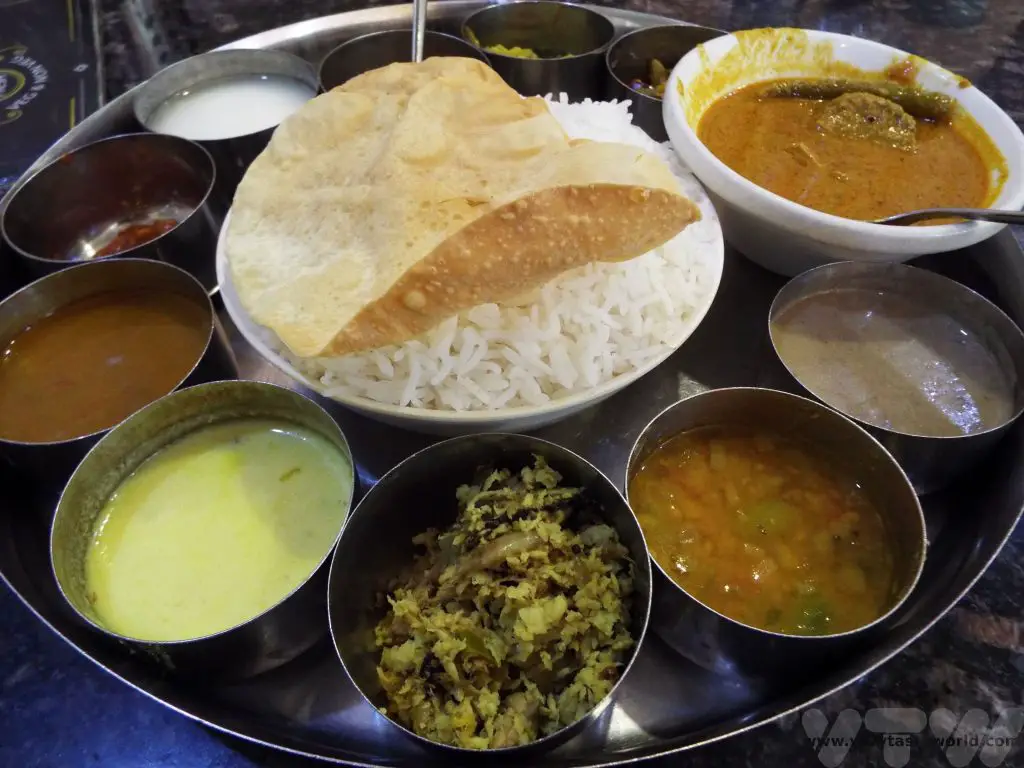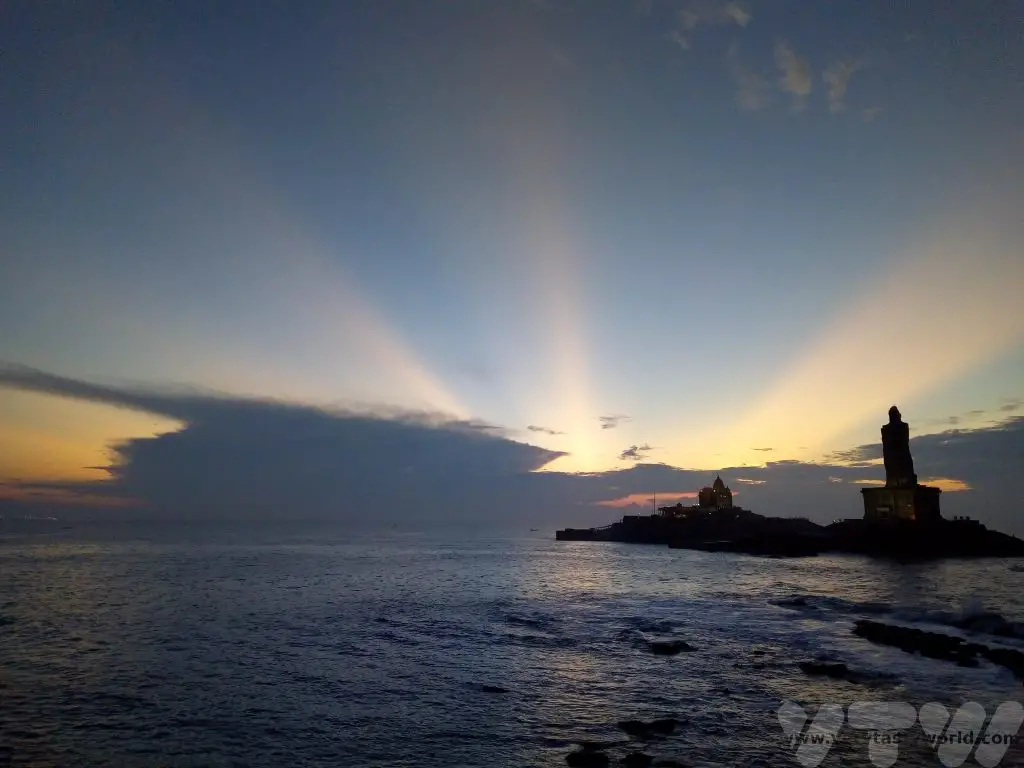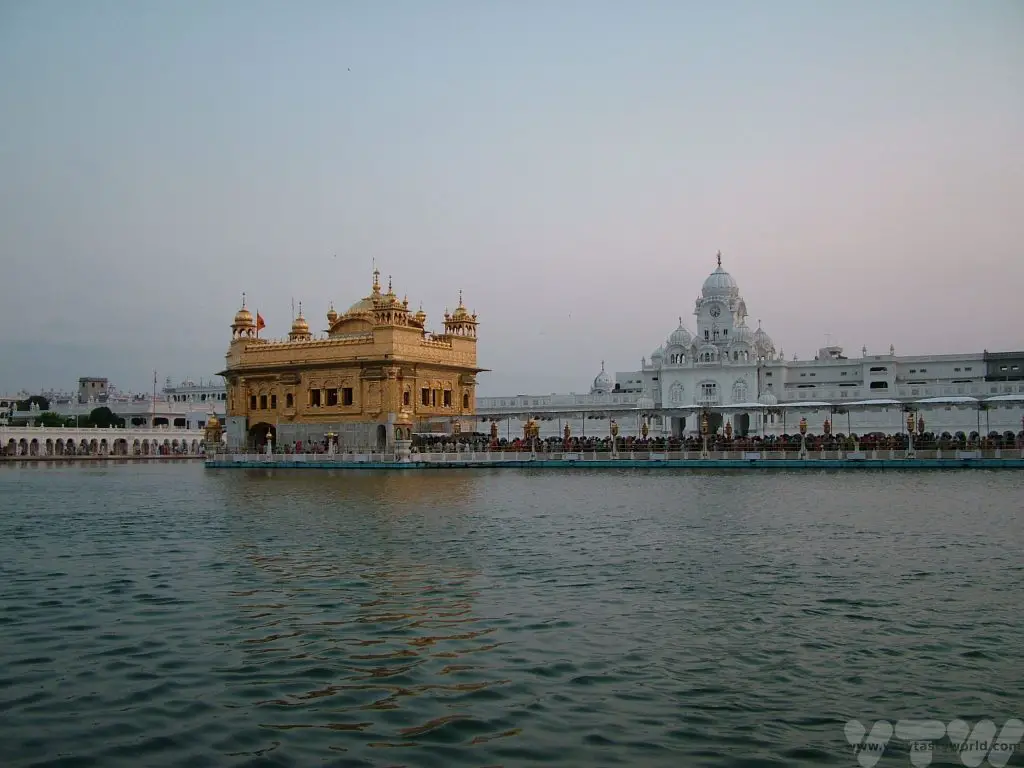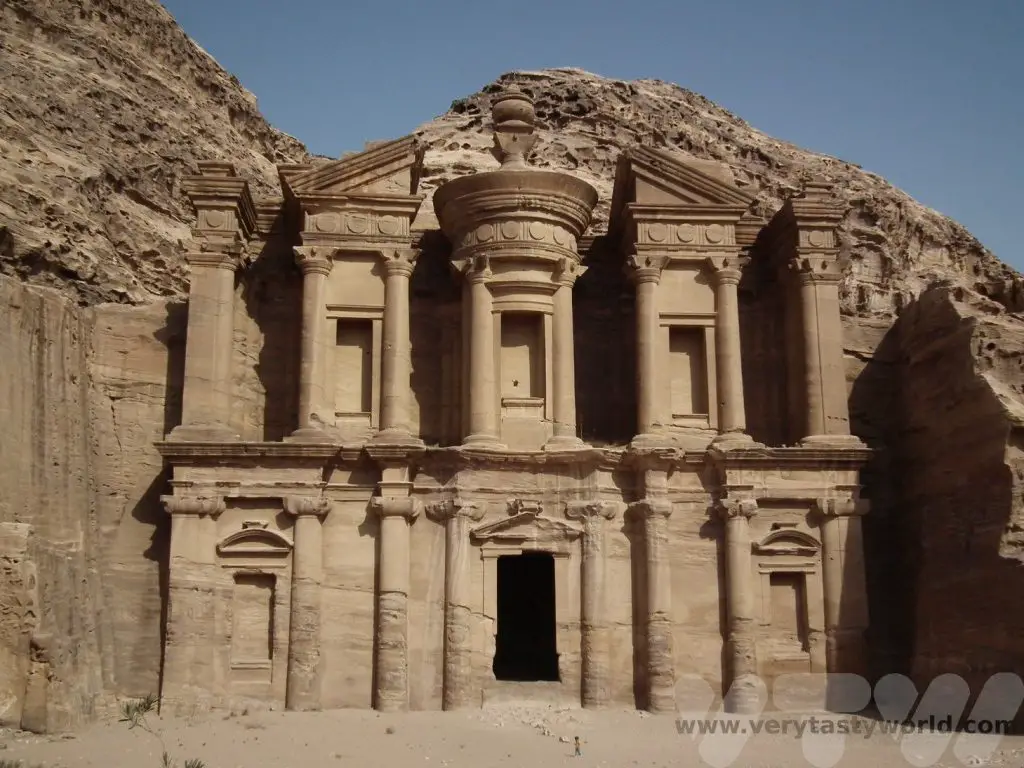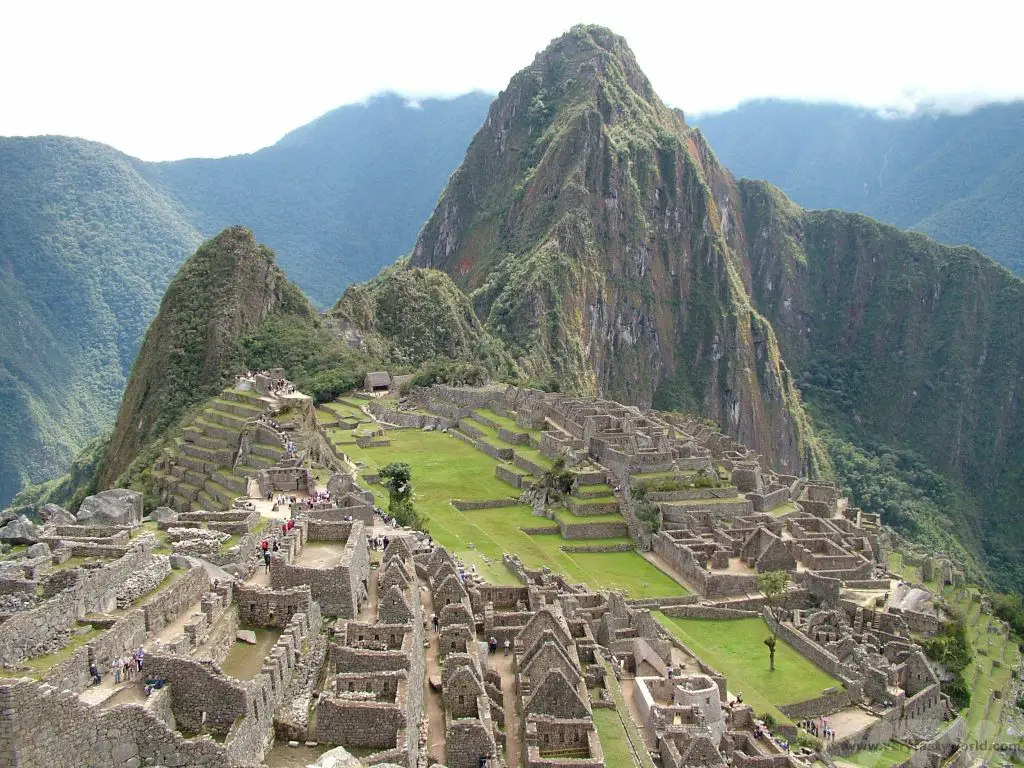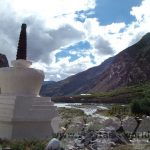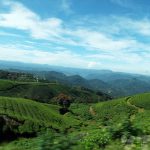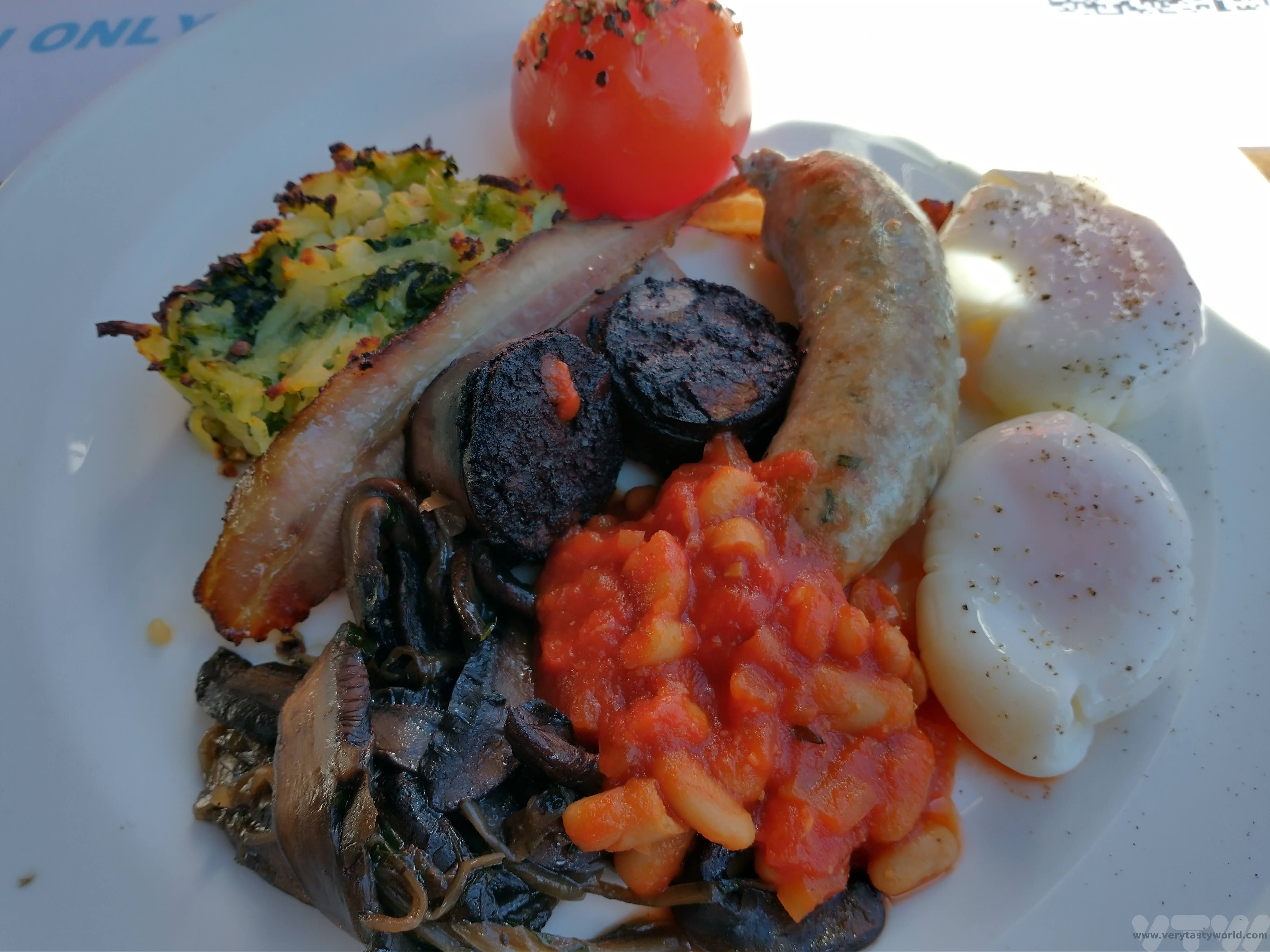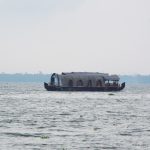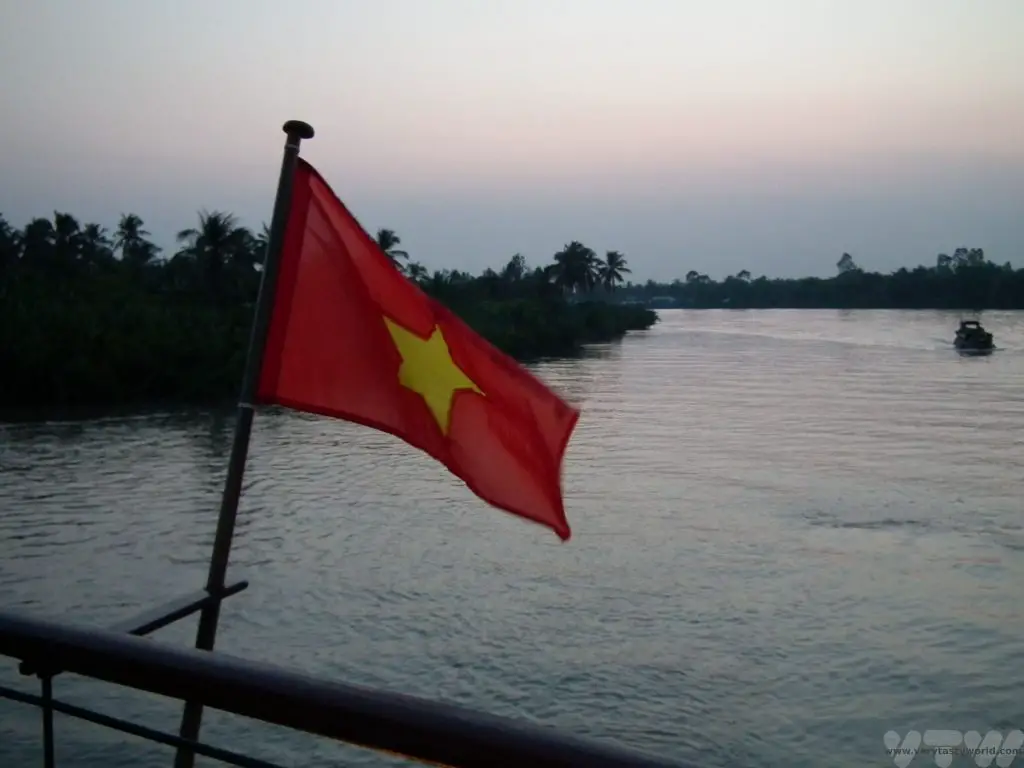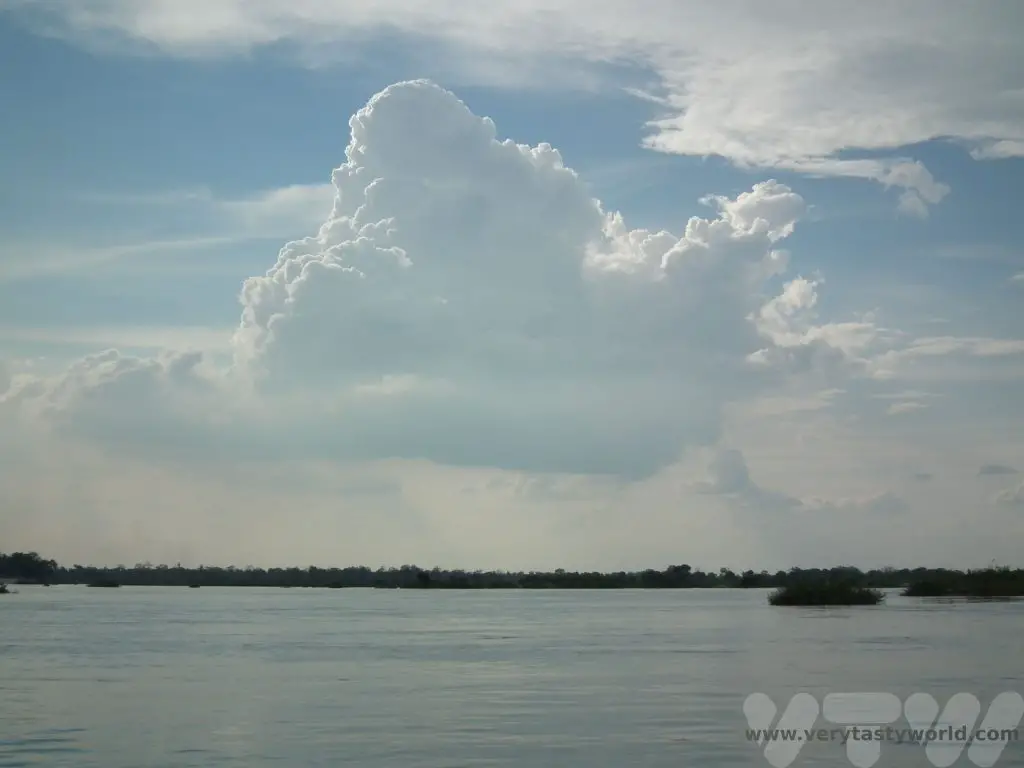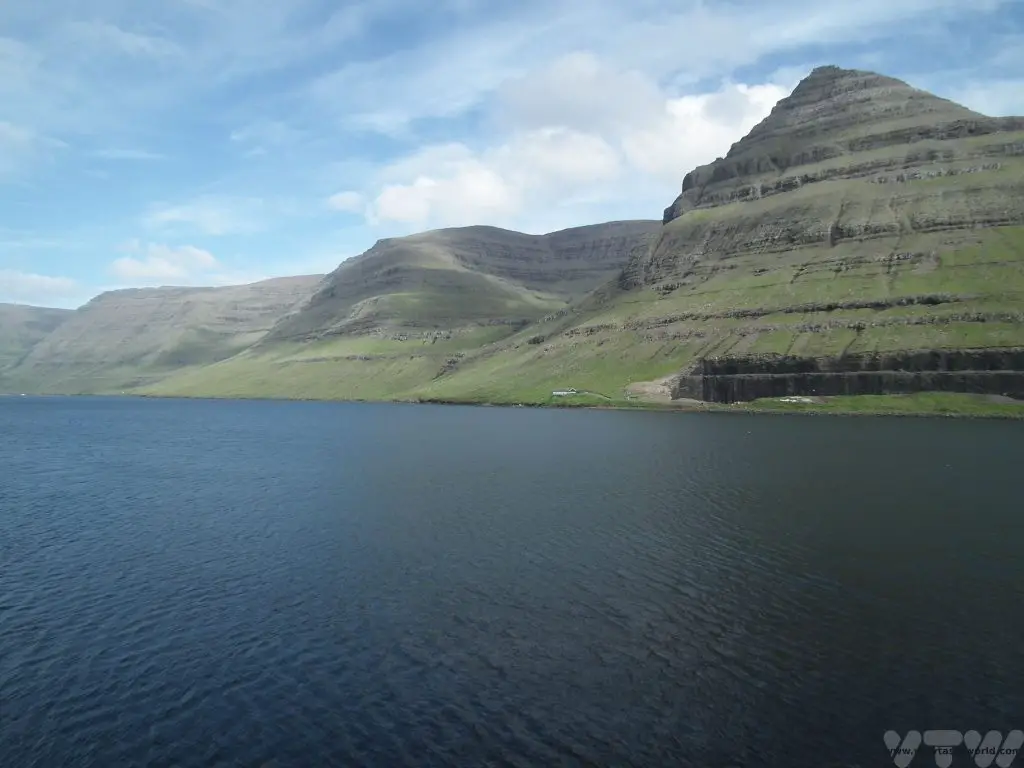Home » Posts tagged 'Kerala'
Tag Archives: Kerala
Places to Visit in Munnar, Kerala
One of the most striking things about the state of Kerala in Southern India is how very green it is. A popular place to visit, it has spectacular scenery, interesting wildlife, fascinating culture and fantastic food. It’s no wonder that the locals call it ‘God’s Own Country.’ We toured the area for a week, visiting Athirappilly, Thekkady and Kumarakom, where we spent a very pleasant afternoon on a houseboat in the backwaters. The hill station near Munnar has the perfect climate and landscape for growing tea. At an elevation of 1500m the temperature is much more comfortable than the searing temperatures closer to sea level. There are lots of places to visit in Munnar and the surrounding area.
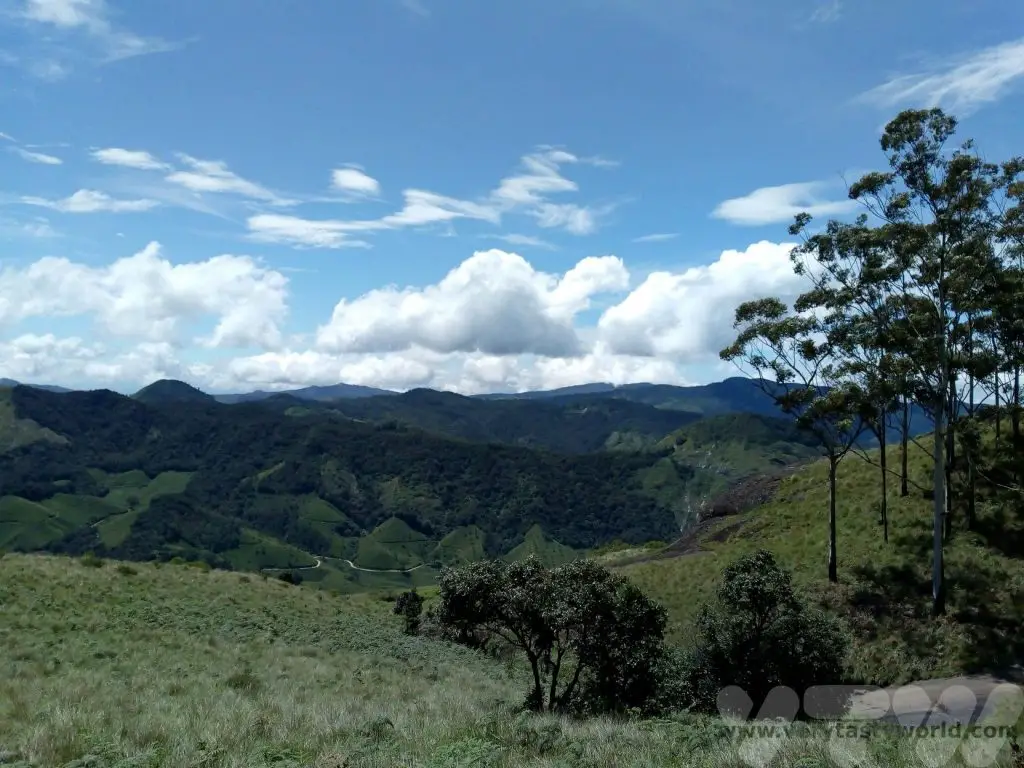
Places to visit in Munnar – Eravikulam National Park
The Eravikulam National Park is one of five national parks in Kerala and is home to a lots of wildlife, including the Nilgiri Thar, a type of goat which is seriously endangered and can only be found in any significant numbers in this area. There also are deer, monkeys, wild dogs, otters, mongooses, martens and porcupine as well as many species of bird and butterflies.
The park used to be a British game reserve during colonial times and was known for its rich hunting grounds. Later, the Kannan Devan Hill Produce Company managed the lands which were handed to the Kerala Government in the early 1970s. The Nilgiri Tahr had become almost extinct by 1972 and was placed on the endangered list so the park became a conservation area and achieved national park status in 1978.
The park is located around 15km away from central Munnar and you can either get a cab or hire a car/driver to reach it. Buses are available but less convenient. You can’t walk or drive around the area, private cars are not allowed inside the park and you have to catch a bus from the entrance car park. Just buy your tickets at the kiosk and join the queue. Beware that the queue may be long as it’s a popular place to visit. The bus ride is very scenic as it climbs the hill via a number of hairpin bends.
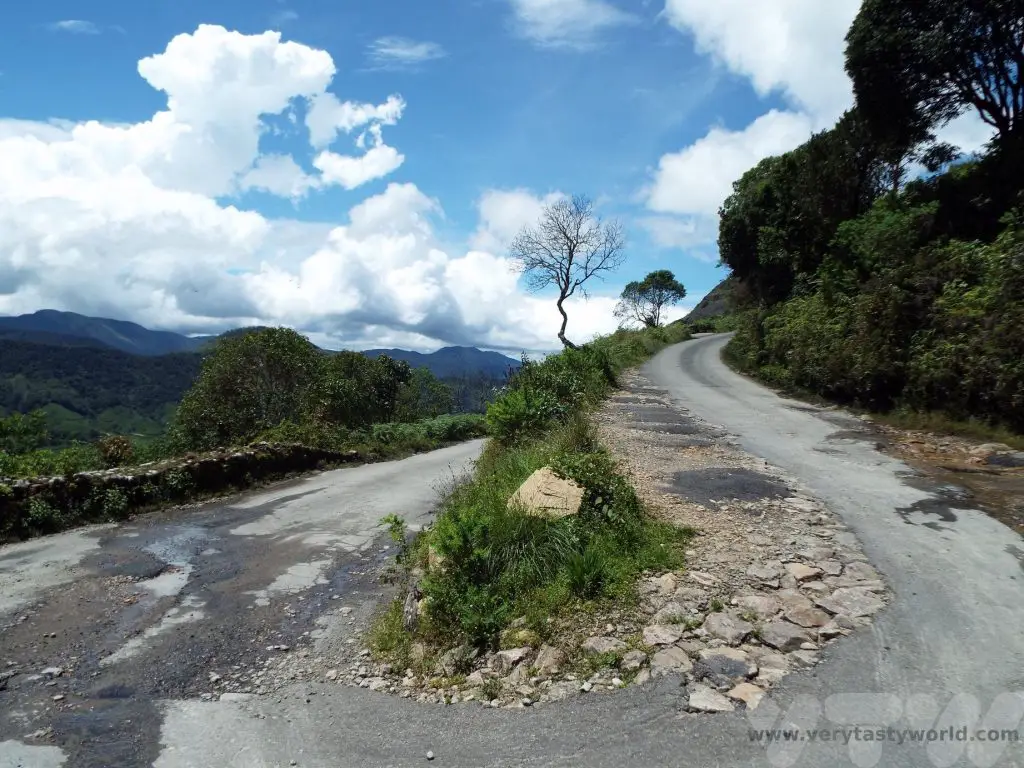
The wildlife wasn’t co-operating when we visited but the trip nevertheless offered a lovely walk with spectacular views.
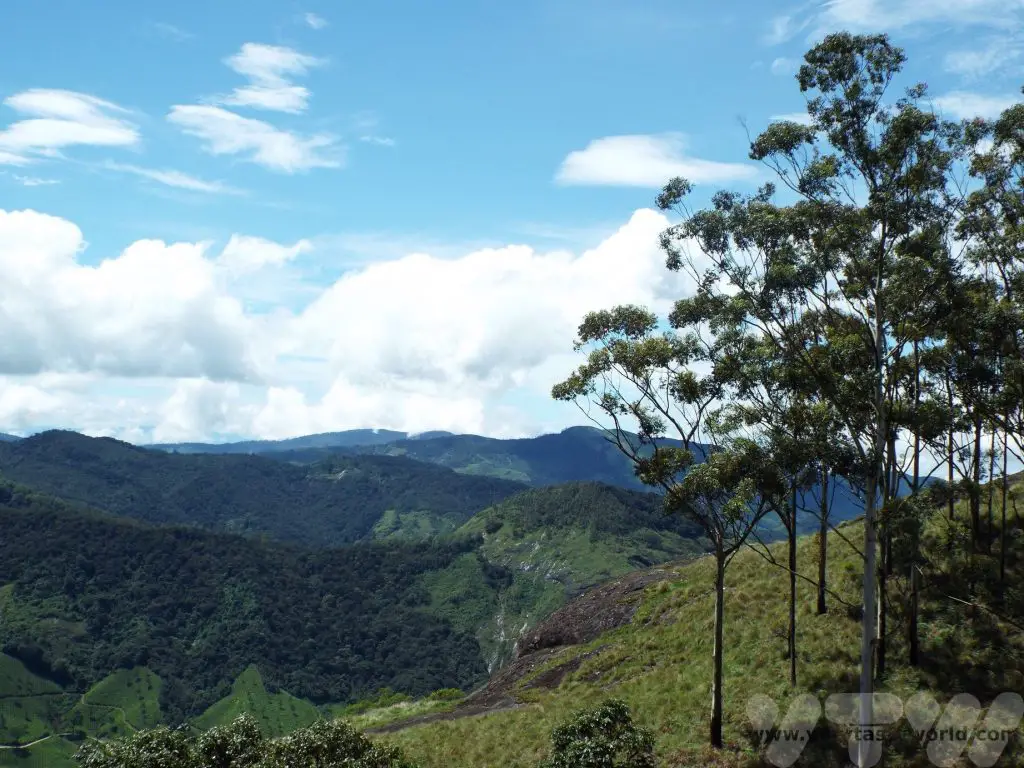
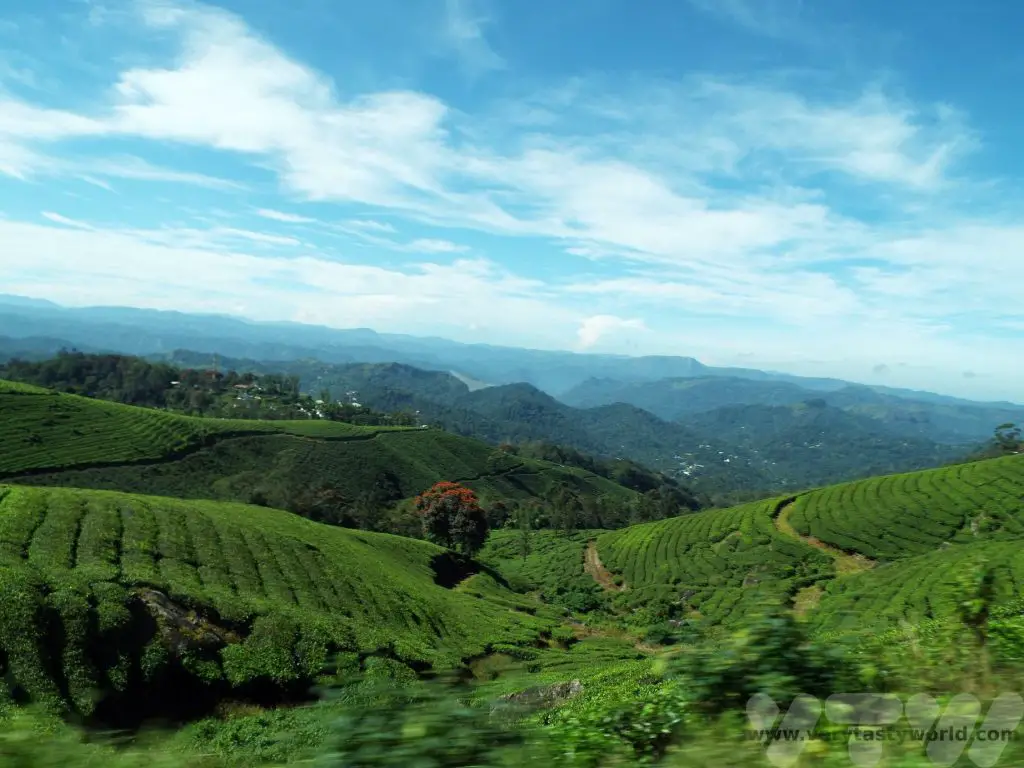
Visit the Rose garden
The Floriculture Centre, more commonly known as the Rose Garden, is worth a short visit if flowers and plants are your thing. You can wander through the terraces and have a look at the local flowers and plants.
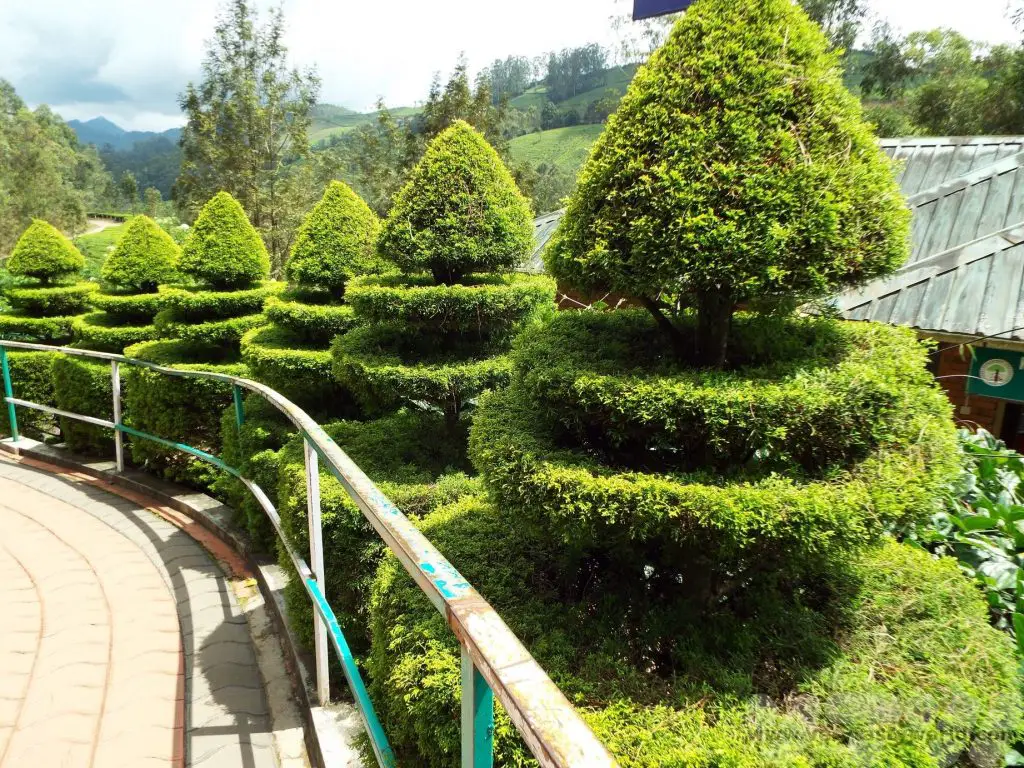
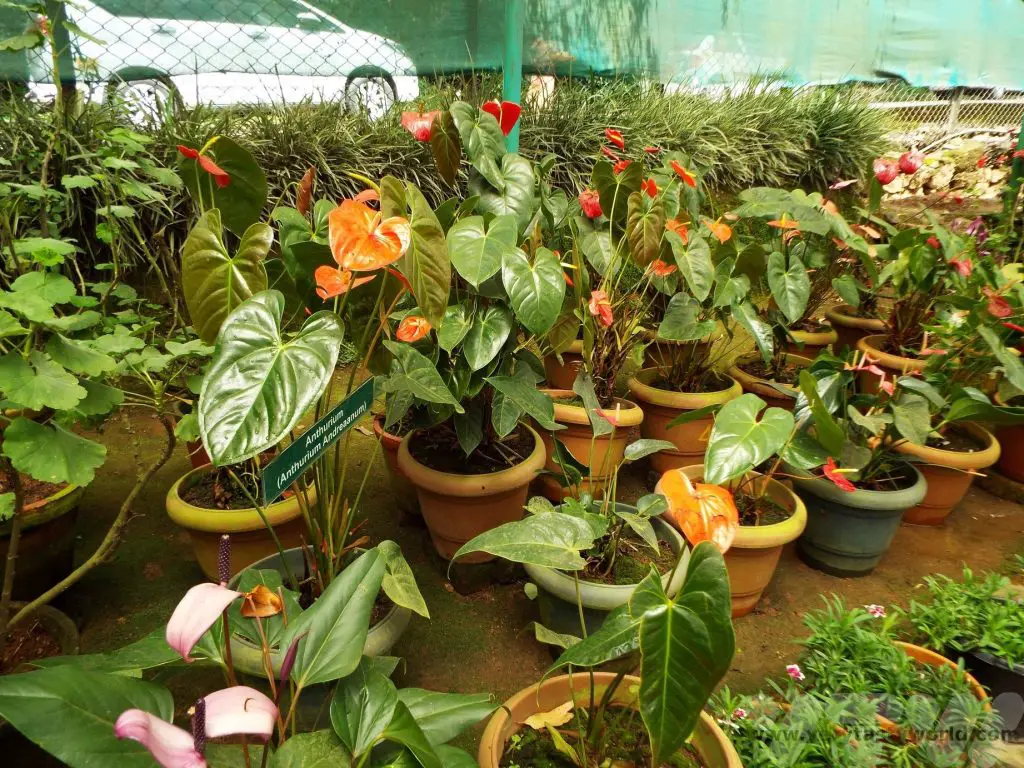
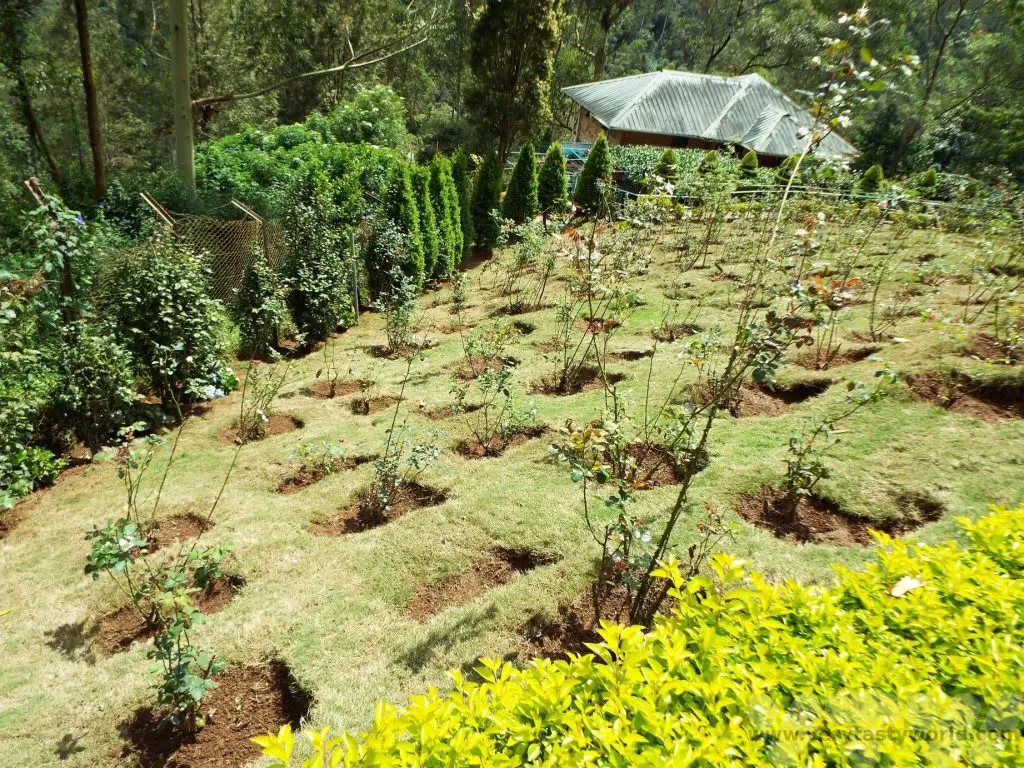
After lunch (you can read about thali here) we headed out through the countryside to visit the Mattupetty Dam and Kundala Dams. On the way to the Kundala Lake, we spotted a bunch of people gathering at the roadside with cameras and phones out and most definitely pointing in a particular direction. It’s always worth stopping to see what the crowds are looking at. And we were rewarded with the sight of a couple of wild elephants sauntering through the fields.
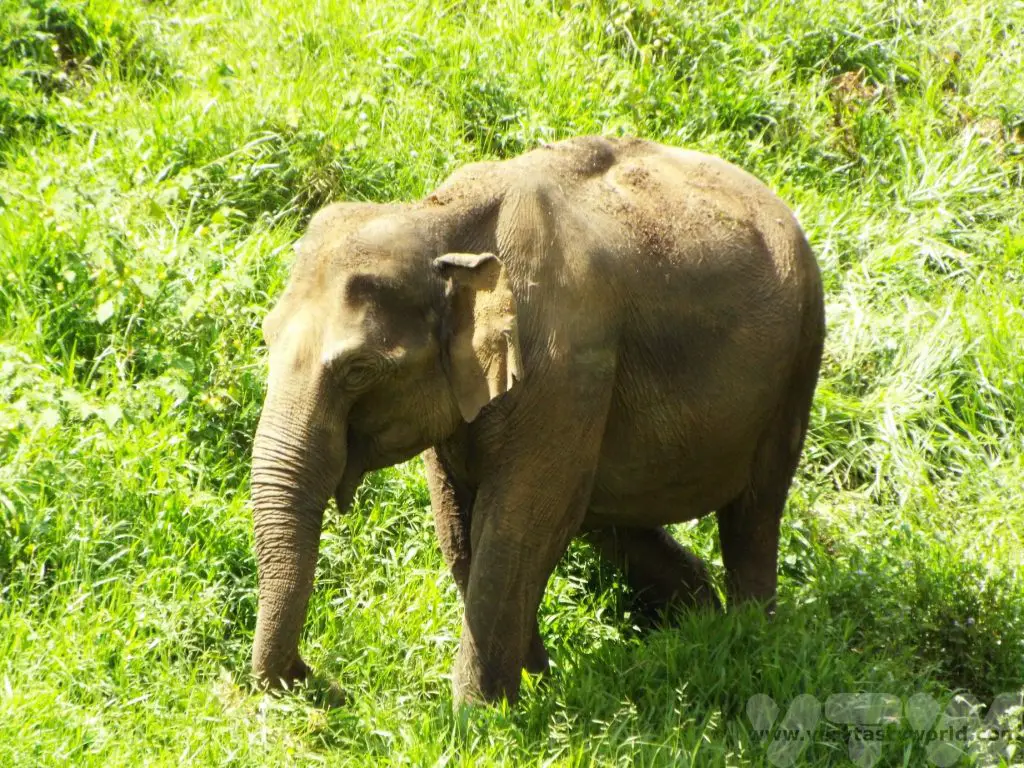
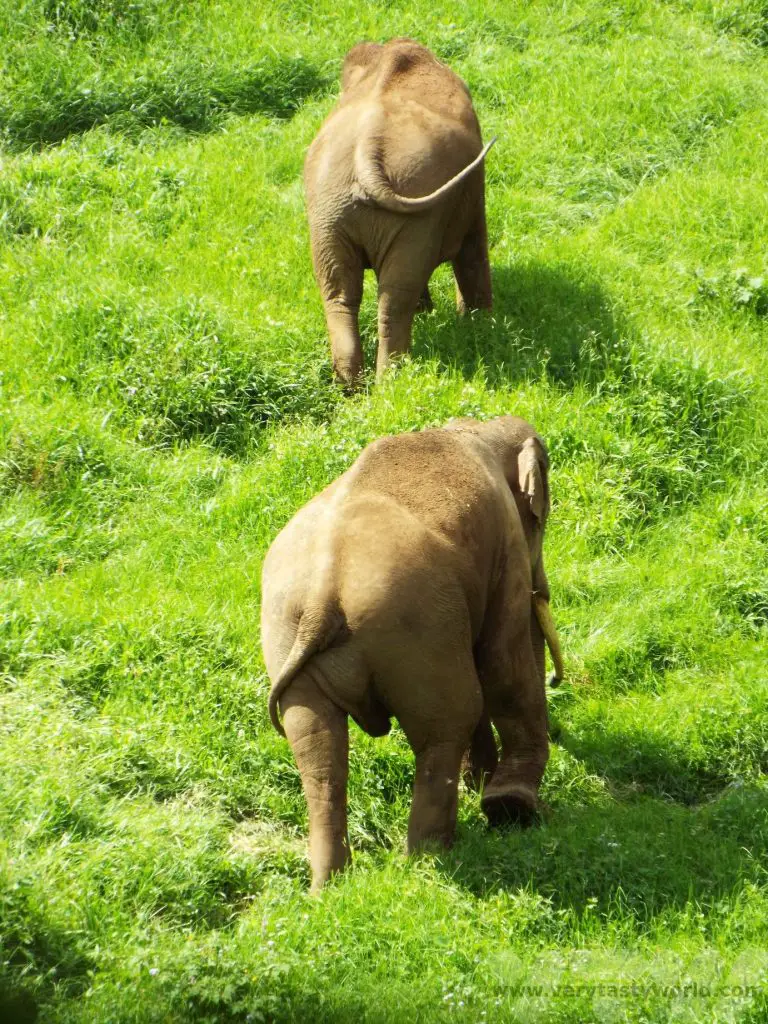
It’s possible to walk in the forests surrounding the lakes and across the dams.
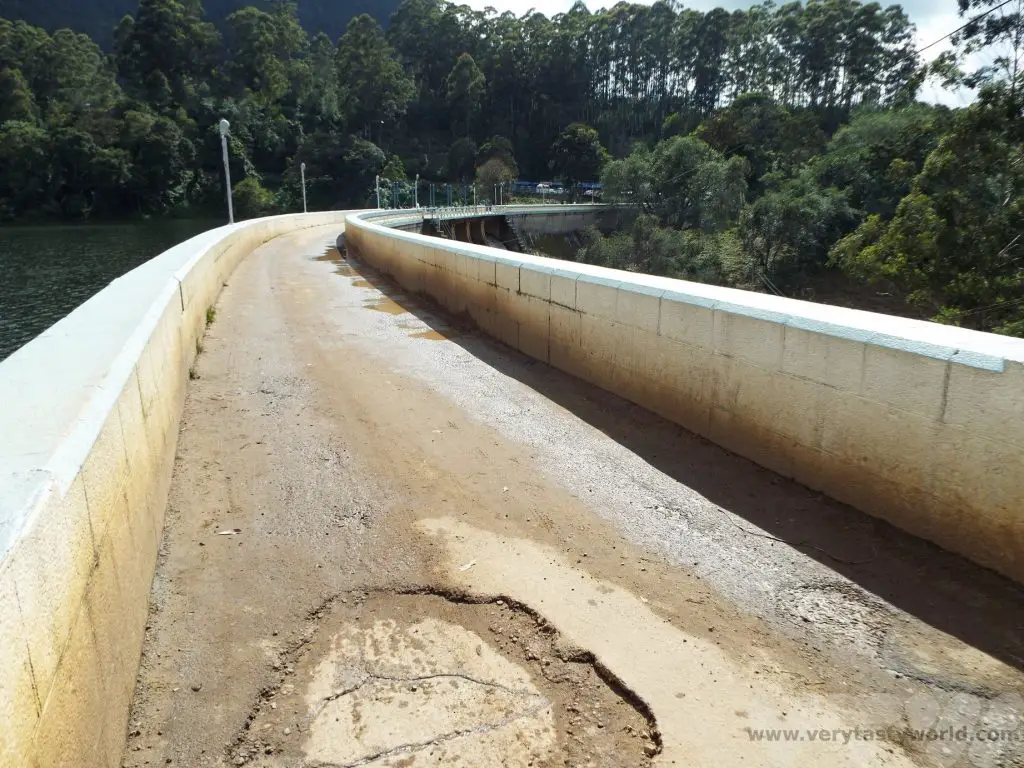
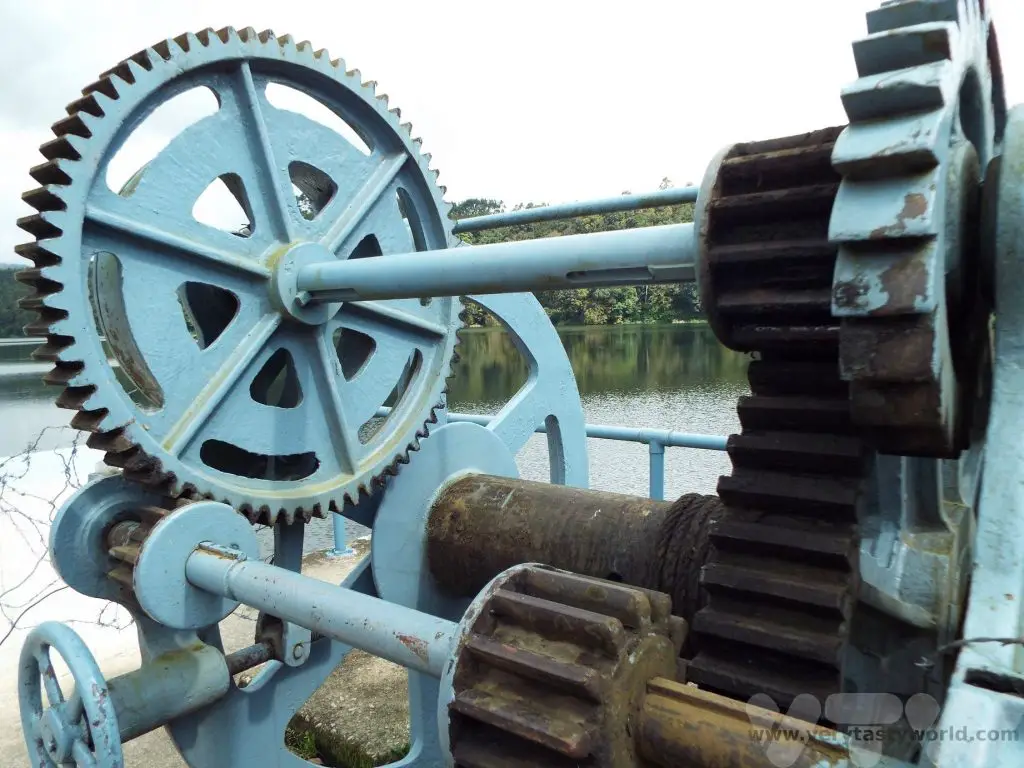
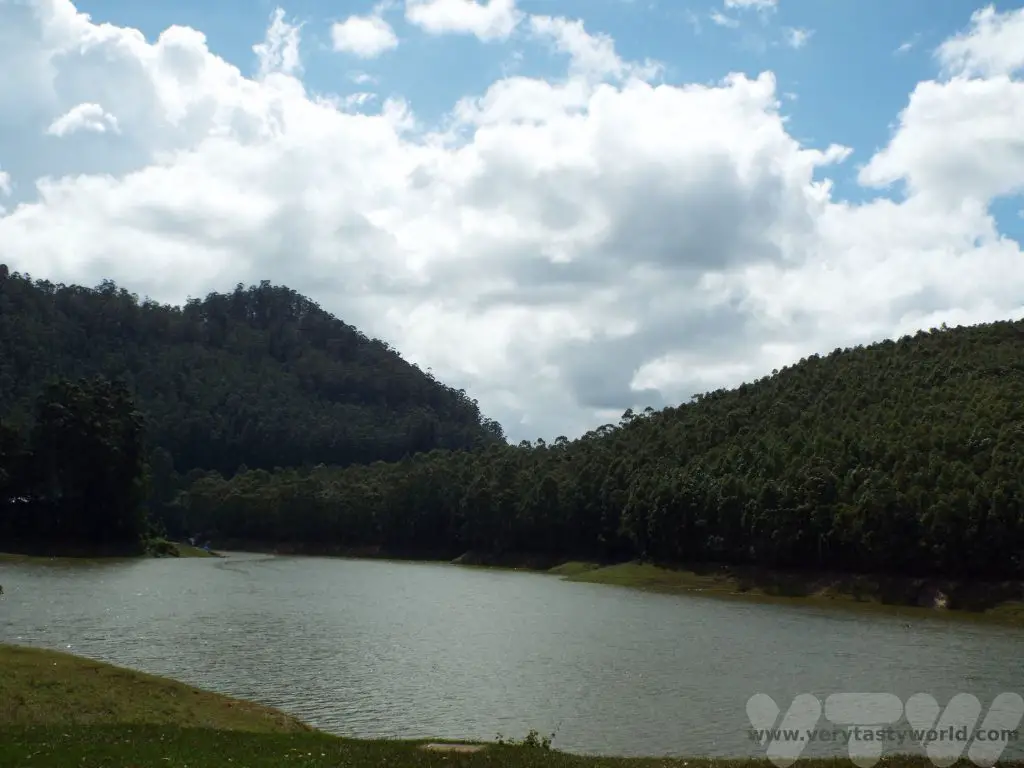
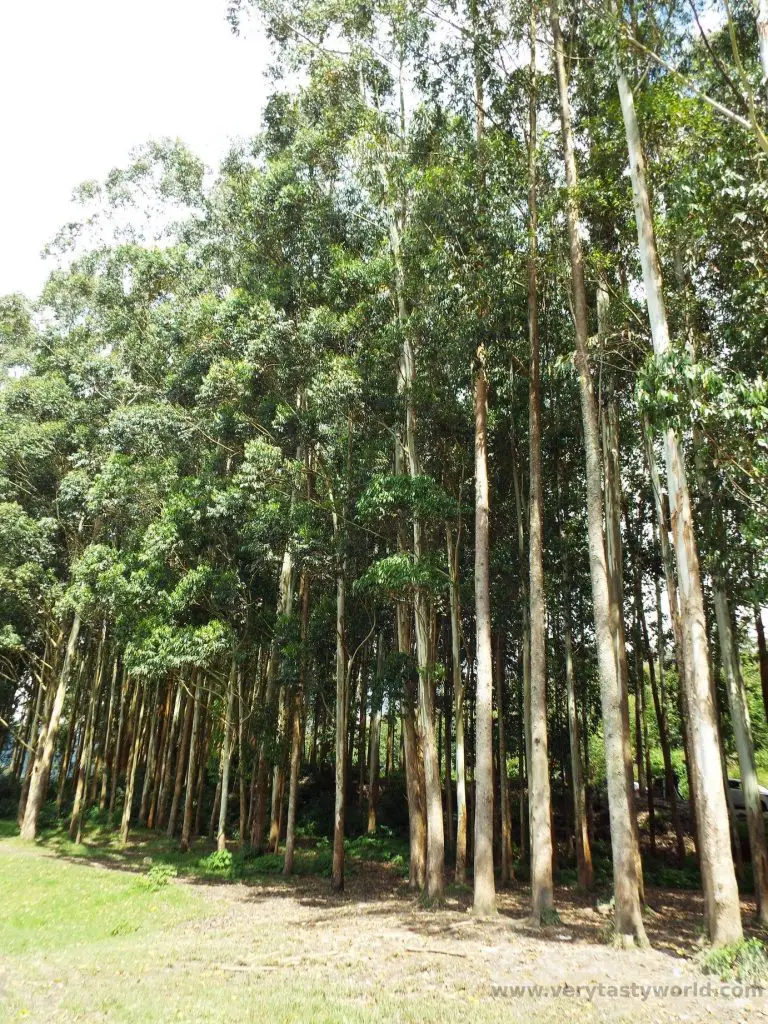
Tea and Spices
Tea plantations adorn the surrounding hills in all directions, each individual tea plant creating a pattern that dominates the landscape.
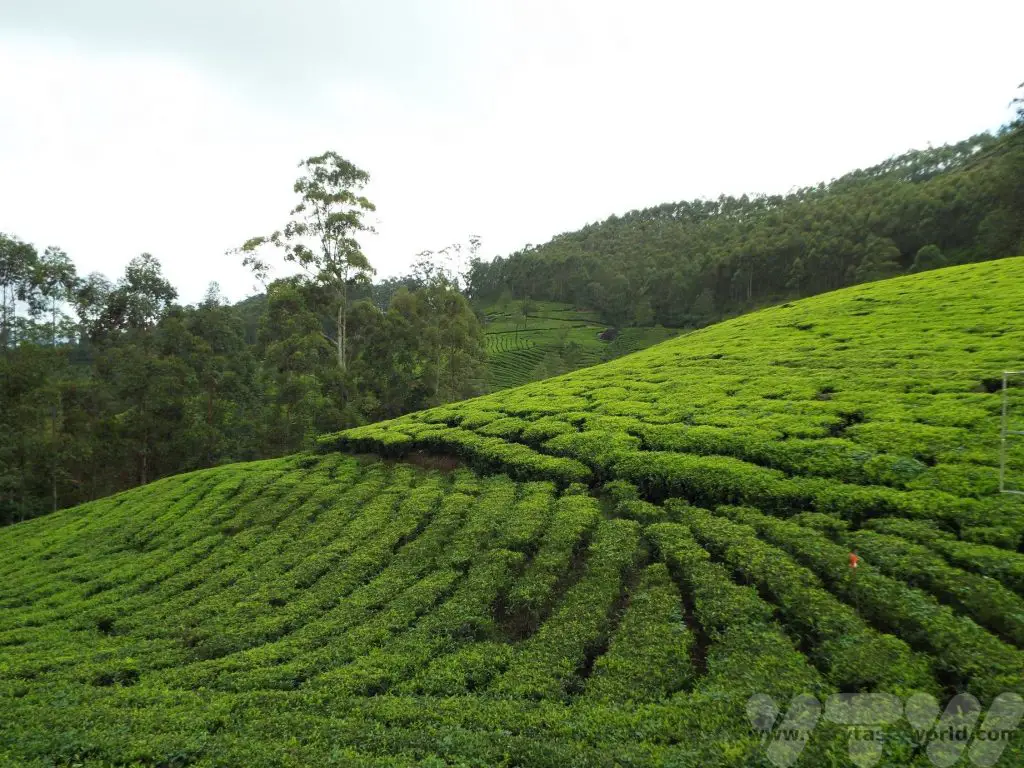
Tea plants like receiving lots of water but don’t like sitting in water, hence the plentiful rainfall in Kerala provides plenty of hydration and the hilly landscape is ideal for perfect drainage.
The tea is picked by hand. Only the top three leaves, which are the most tender, are used. There are a number of processing plants around Munnar. We didn’t have time to visit a tea plantation but did bring back some Munnar tea as a souvenir.
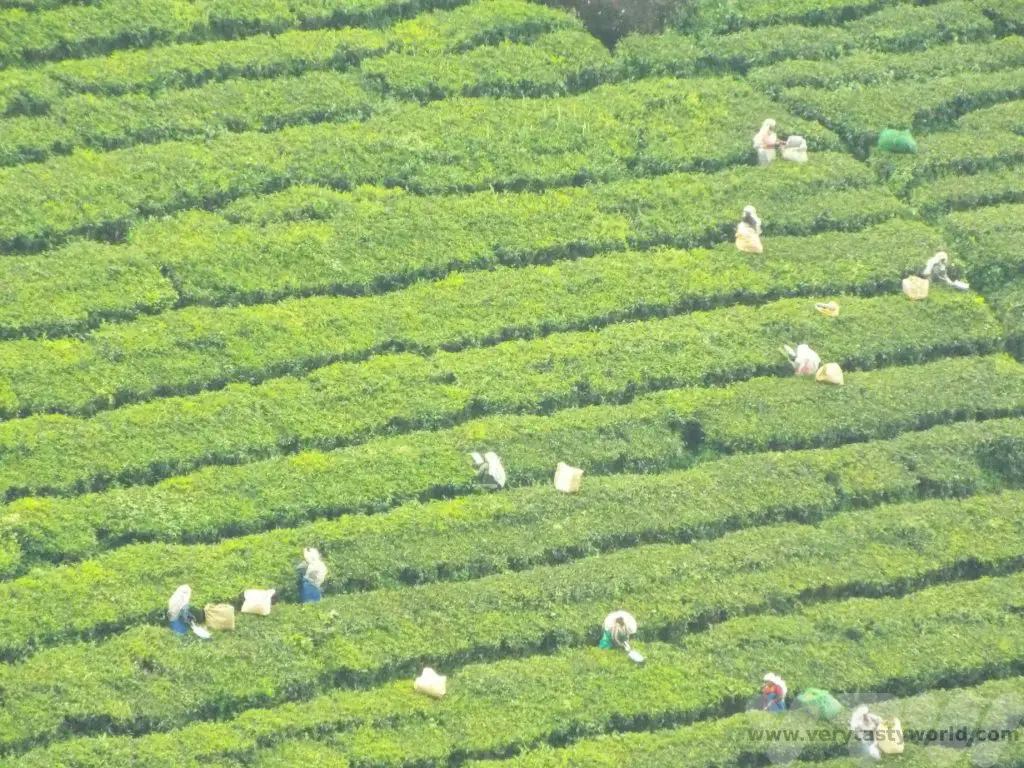
Kerala is also famous for its spices. Keralan cuisine is amazingly good – all the dishes we tried were beautifully flavoured. Many of the spices grown can be used in both savoury and sweet dishes. We visited a spice plantation, in the pouring rain (thankfully they loaned us umbrellas) and saw a number of plants that are used for culinary and medicinal purposes.
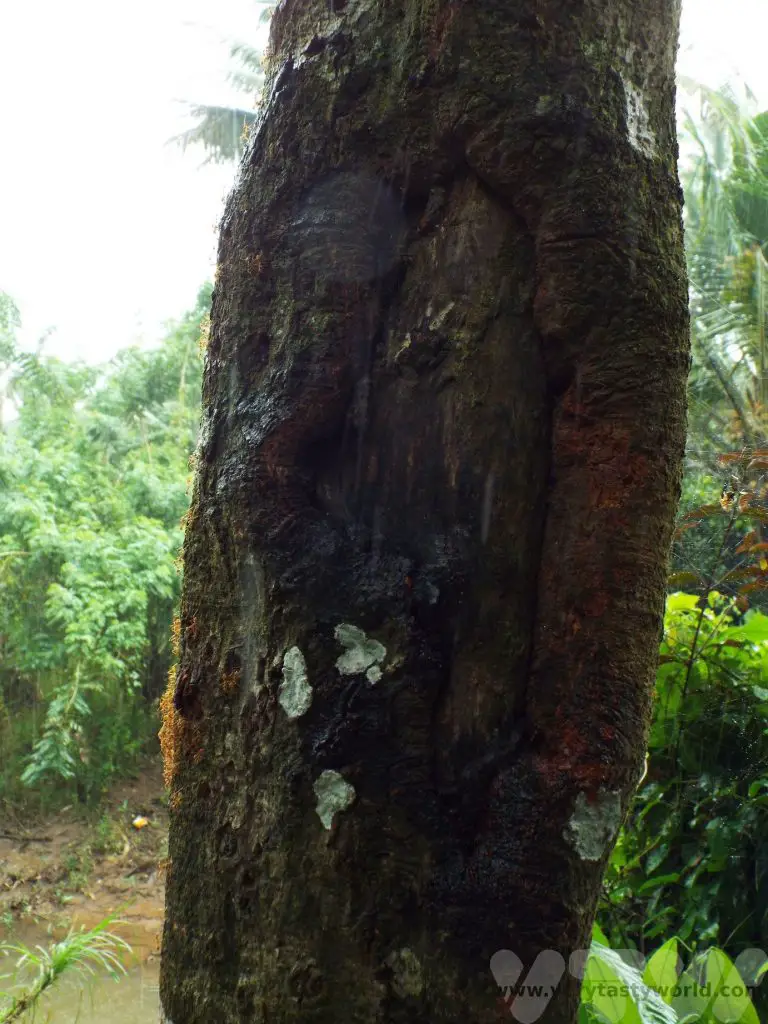
Cinnamon comes from the bark of the tree. Peel it off and it curls up into those familiar scrolls.
Allspice is a very apt name. If you smell and taste: think of nutmeg. Yes! Think of cinnamon. Yes! Think of cloves. Yes! It really has a flavour that can emulate many different spices and is a great all-rounder.
Cardamom is an amazingly aromatic spice. It actually grows at the base of the plant in little pods.
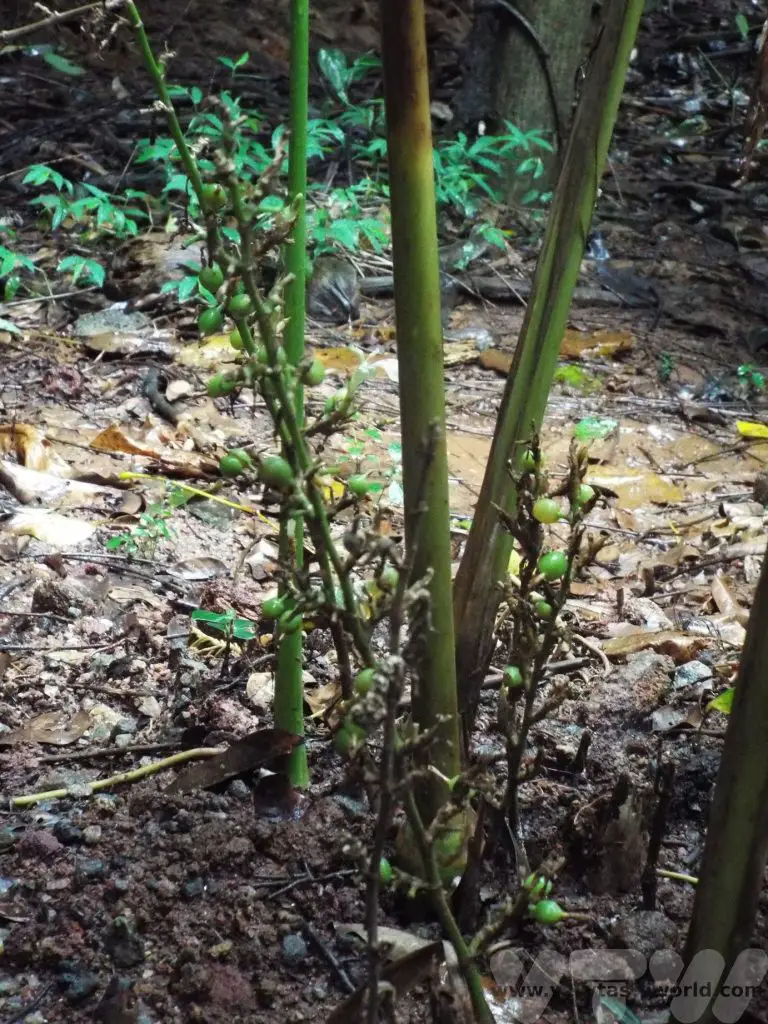
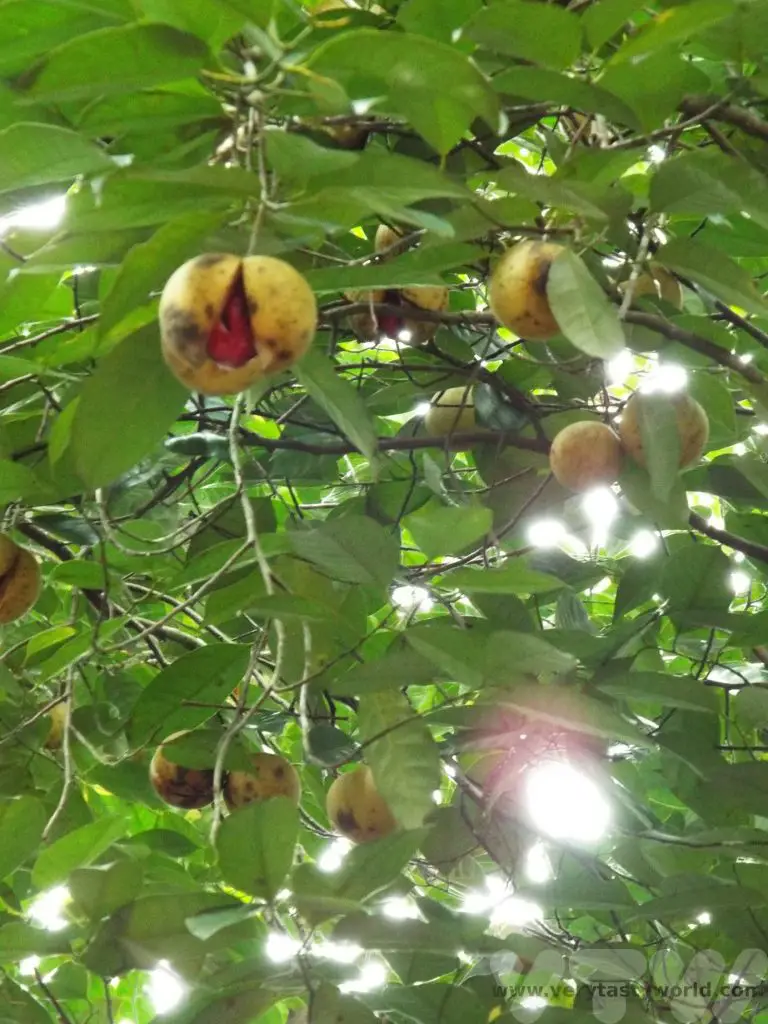
Nutmeg and mace. Mace is the outer ‘skin’ of the nutmeg – you get a milder nutmeg taste with a more citrusy flavour.
Cloves add a real fragrance to savoury dishes. They also have a numbing effect and are a traditional remedy for toothache.
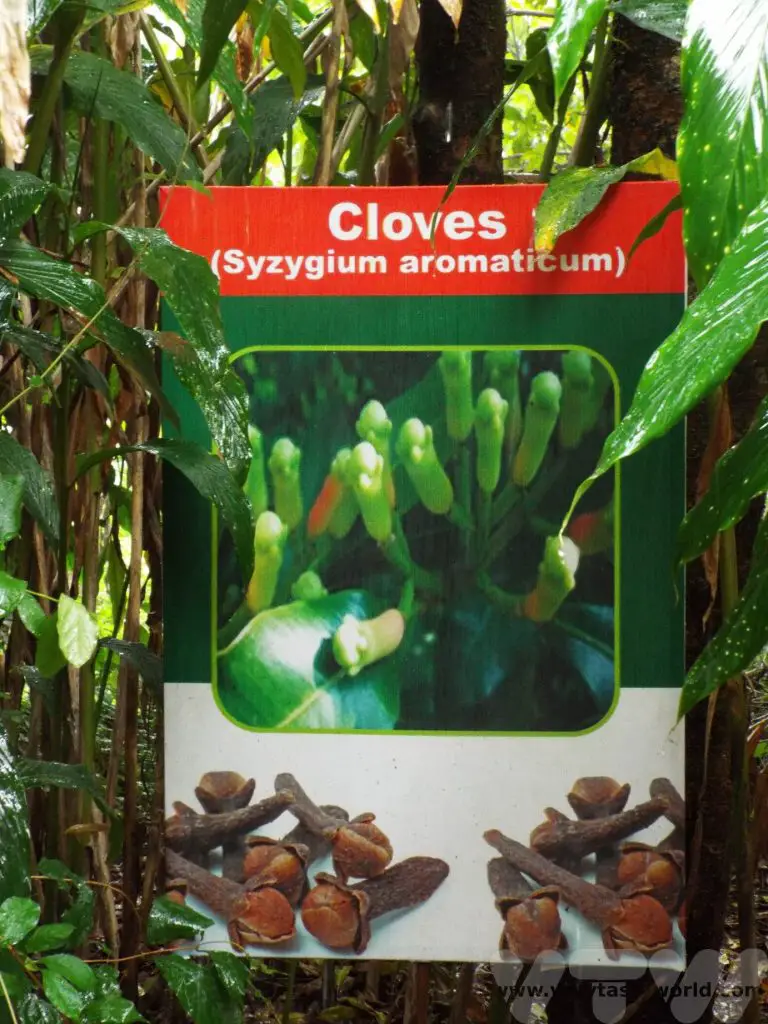
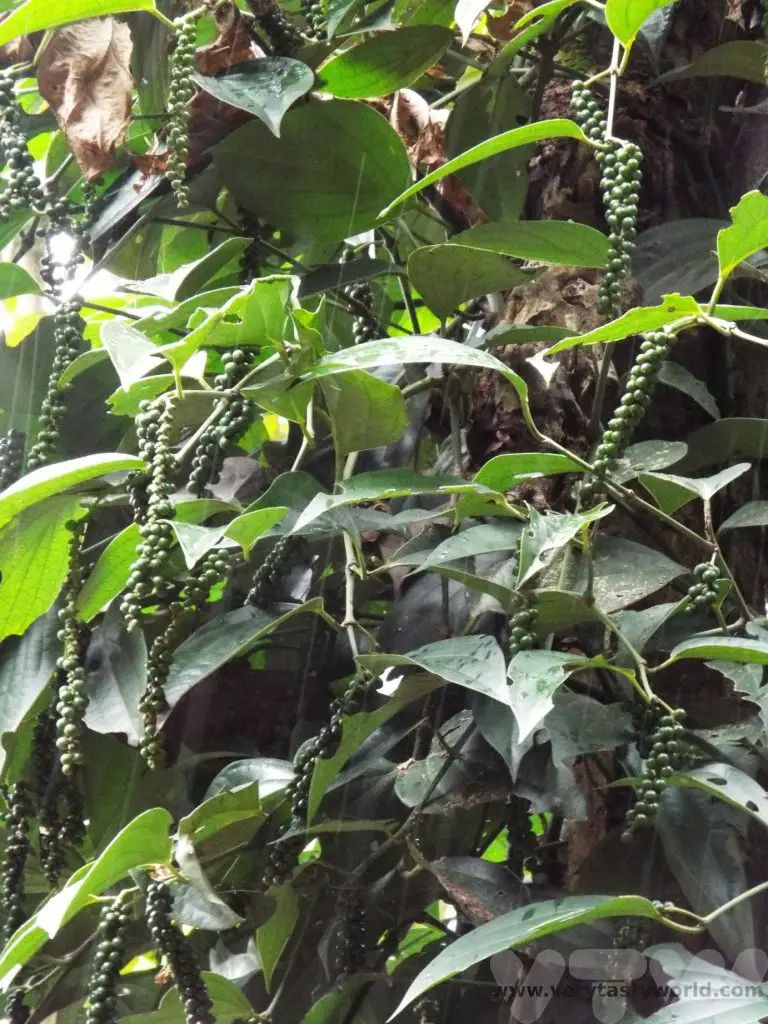
Peppercorns are native to Kerala and have been used in Indian cooking since at least 2000 BCE. Once the most valuable spice in the world, pepper can be eaten in its many different forms (albeit the same fruit of the tree): green peppercorns are the unripe fruit of the pepper tree. When they turn red they are ripe. Black and white peppercorns are, likewise, both the same fruit of the pepper plant, but are processed differently. Black peppercorns are picked when the fruit is almost ripe and then they are sun-dried, and this turns the outer layer black. White pepper is the peppercorn without the skin. It’s the black skin that has the distinctly peppery flavour elements. If you want heat but not the flavour, white peppercorns are the one to use.
We purchased some of the spices, particularly those that are expensive to buy at home. They make ideal souvenirs as they easily slip into any spaces your backpack and ours have been used extensively since our return home.
Places to Visit in Munnar – Kathakali and Kalaripayattu performance
We made our way to the Punarjani traditional village to see a Kathakali and Kalaripayattu performance in the early evening.
Kathakali is a form of classical Indian dance which tells a story, often based on traditional legends, Hindu mythology and Indian epic stories. There is a narrative but no dialogue – dance, mime and song are the means by which the story is told. Artists spend several years training at specialist schools in order to develop their skills. The expressive performance is emphasised by the spectacular costumes and make-up, which can take around 3-5 hours to apply.
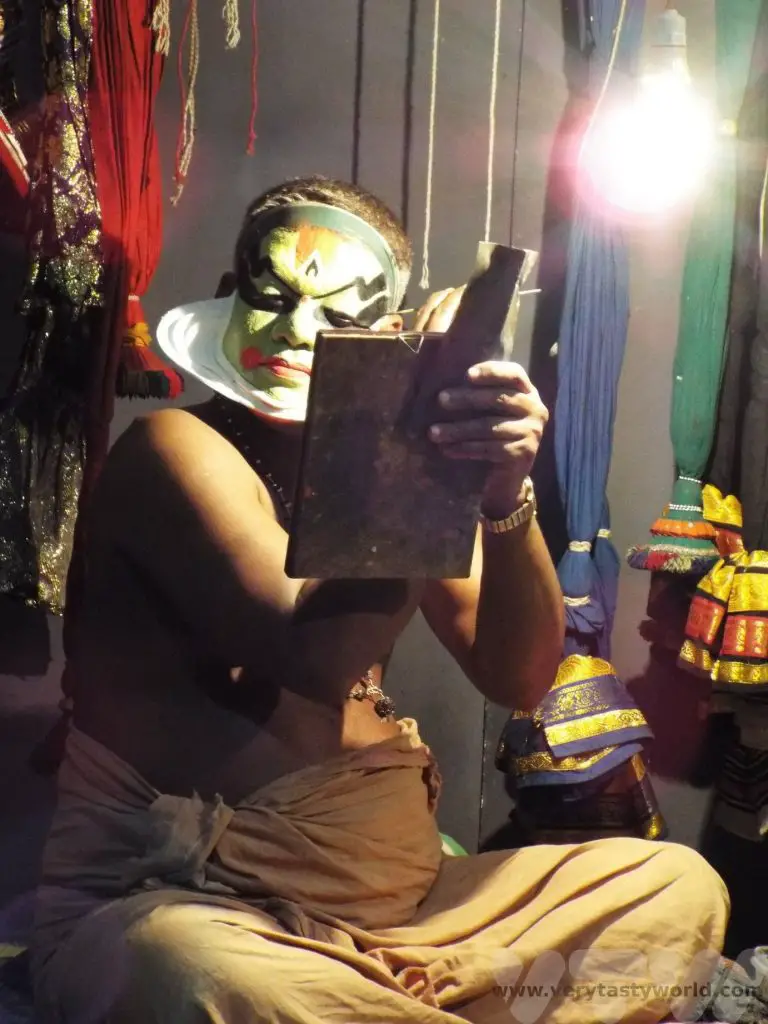
It is worth arriving early for the performance because you are often allowed backstage to watch the performers apply their remarkable make-up.
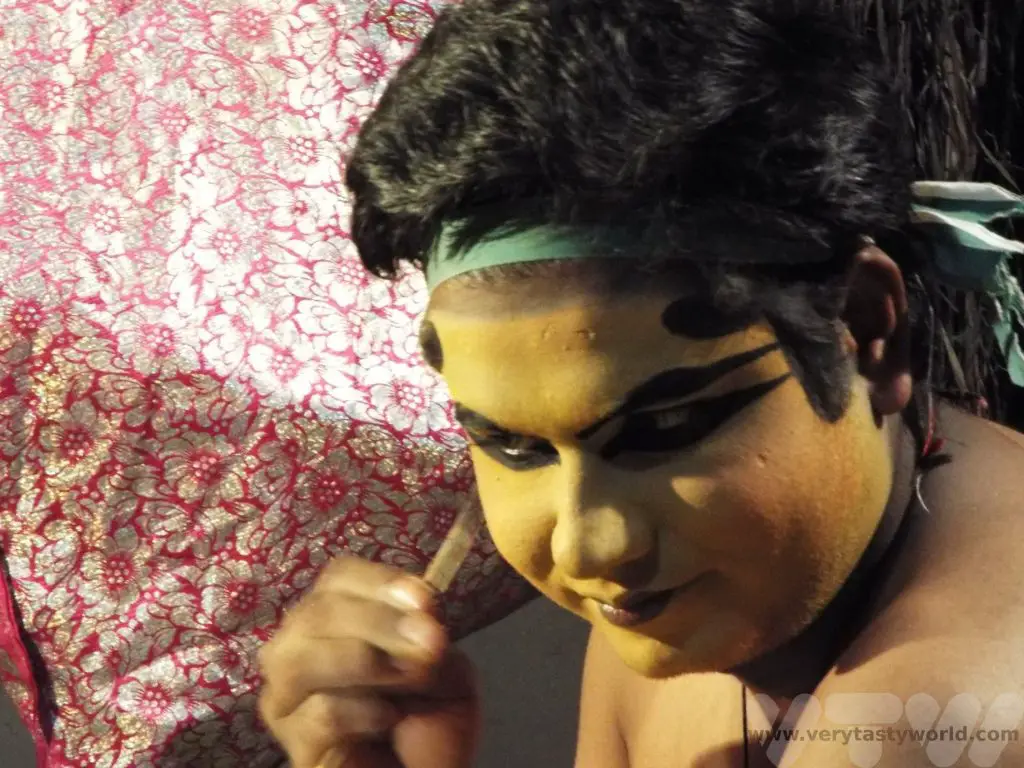
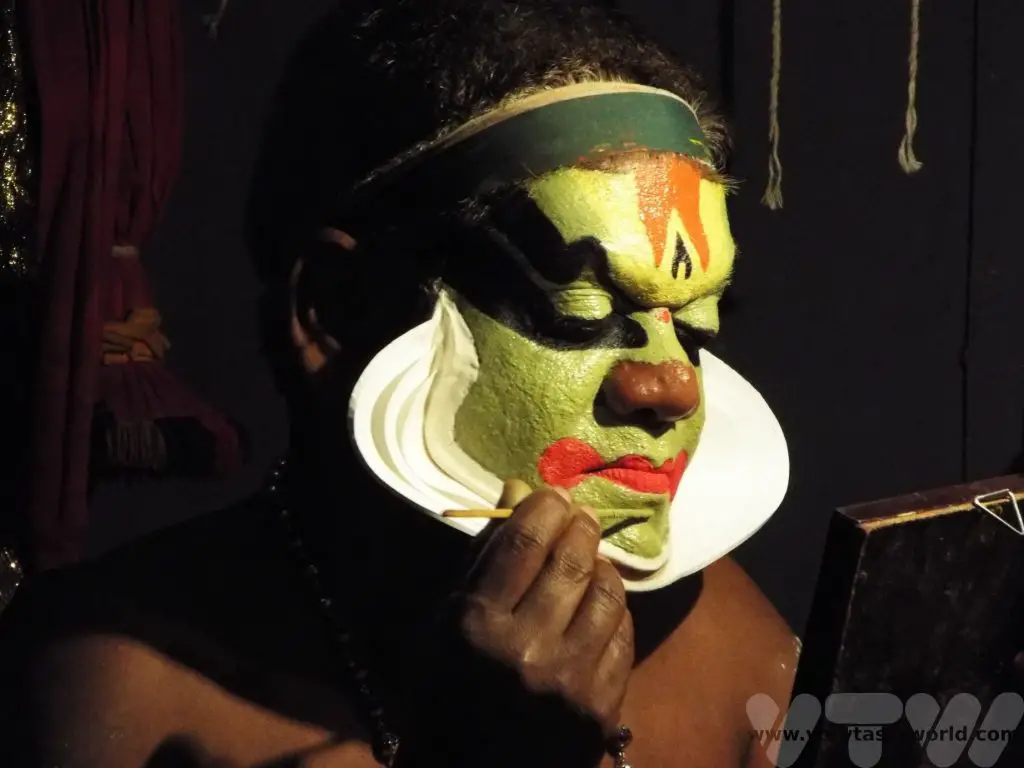
You have a choice of seating and if you sit in the stalls there’s a possibility that you may be called up on stage to take part in the performance. It’s largely mime-based so no need to worry about any language skills.
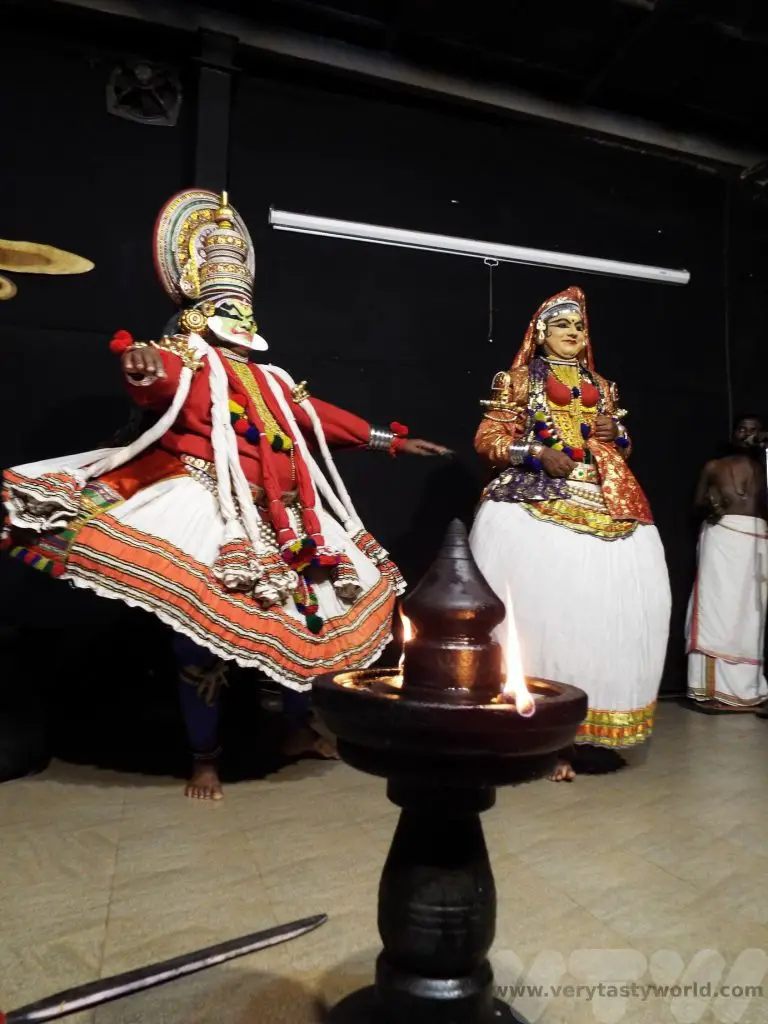
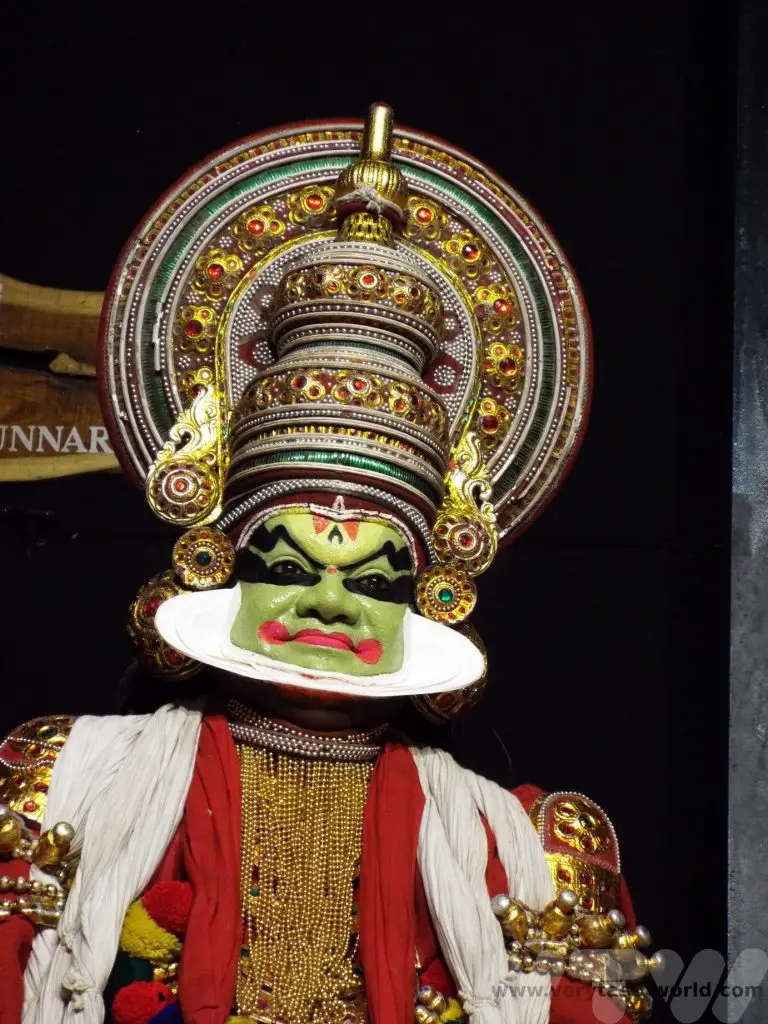
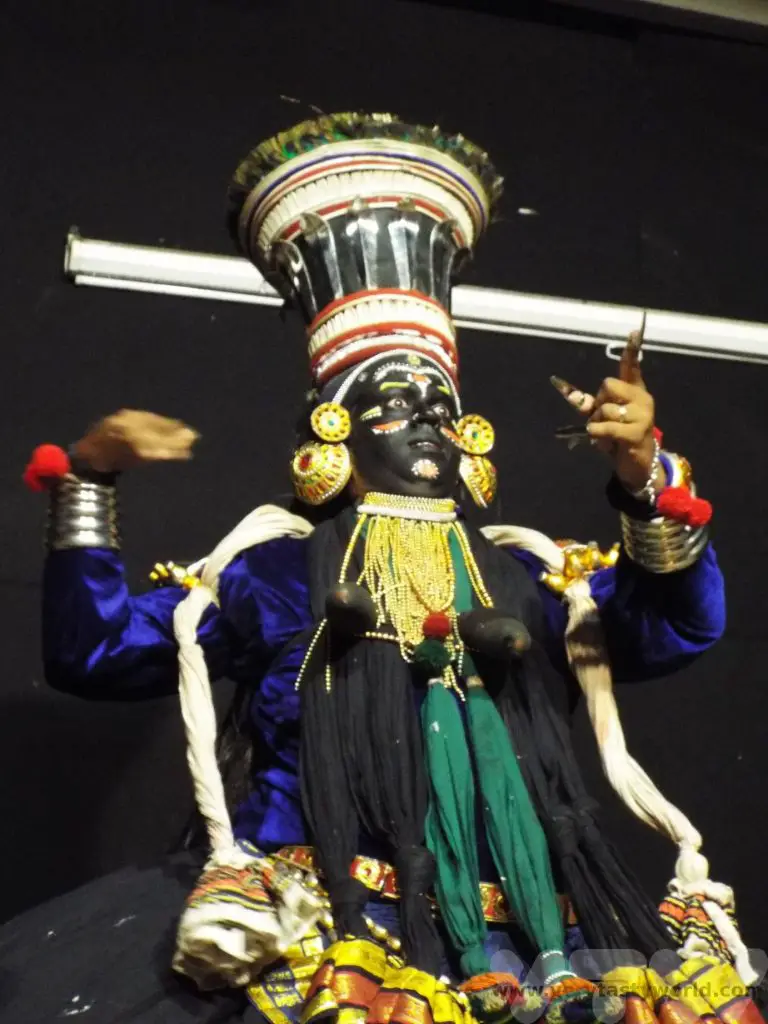
The Kathakali lasts around an hour and, if you wish, you can then watch a Kalaripayattu performance in an adjoining theatre. This is a form of Indian martial art, indeed it is one of the world’s oldest martial arts, and is spectacular to watch. It is highly acrobatic and uses a number of weapons. The demonstration is lively, exciting and occasionally scary!
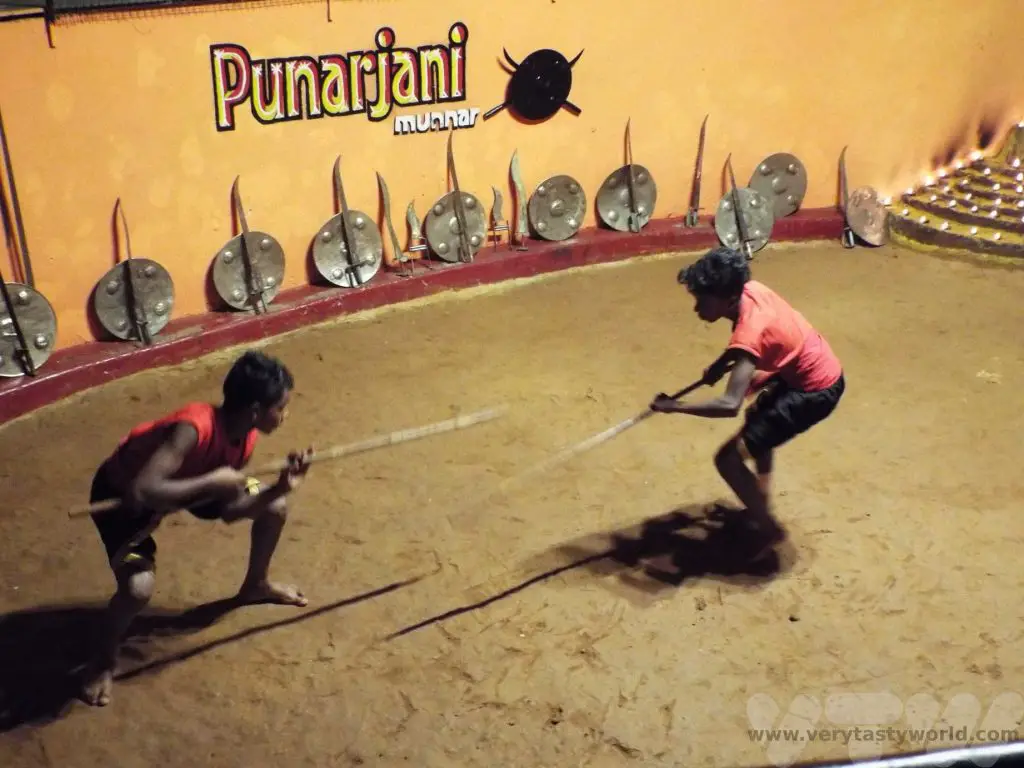
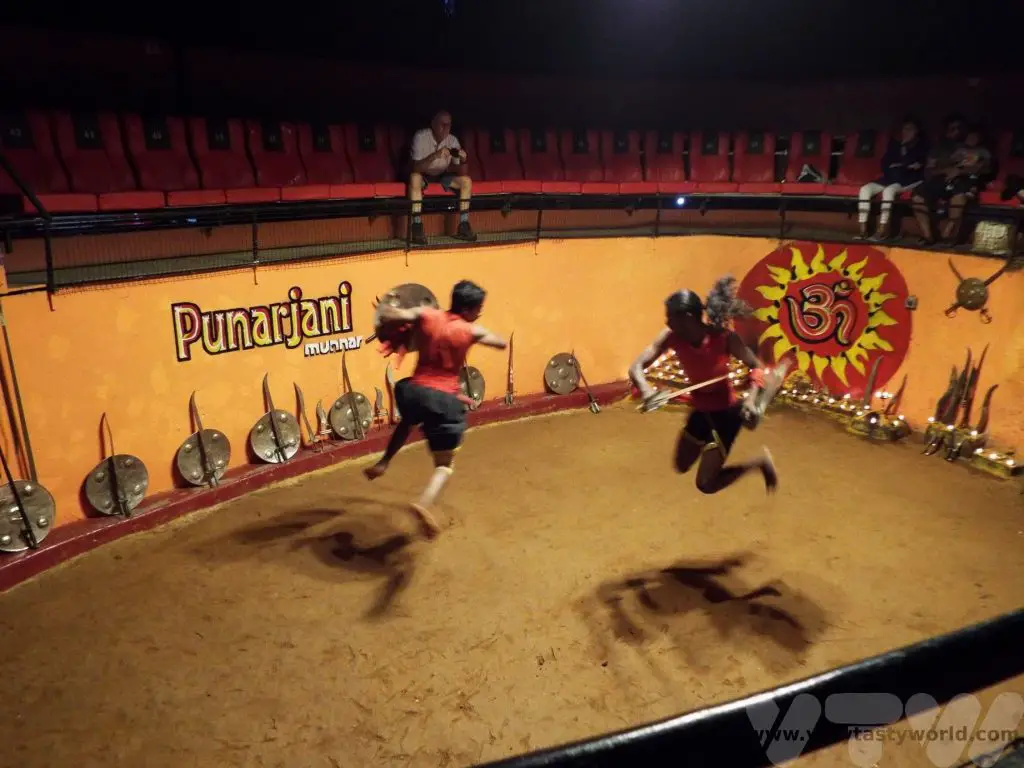
Eating in Kerala
All the meals we ate in Kerala were completely brilliant. Because of the diversity of the region both vegetarian and non-vegetarian meals, featuring fish, poultry and red meat, are readily available. The fish dishes are particularly good, using locally caught fish from the rivers and the sea. The food is delicately flavoured with local spices – all the spices we encountered at the plantation featured heavily, notably black pepper, clove, cardamon, cinnamon and ginger. Here are some of the dishes we tried.
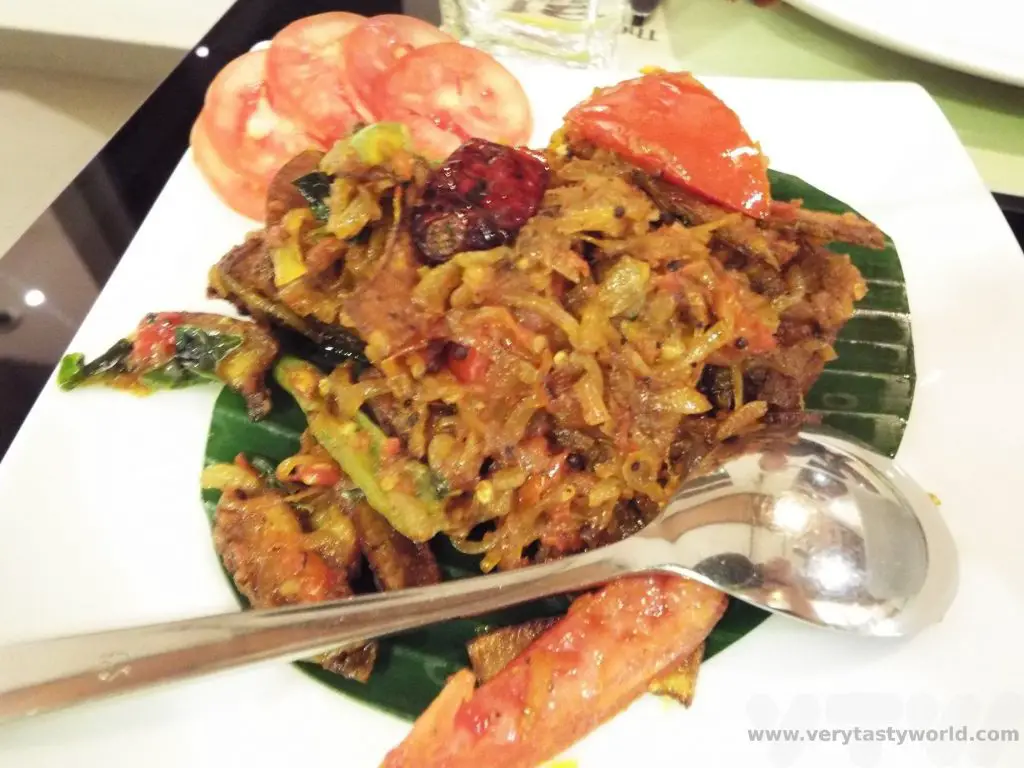
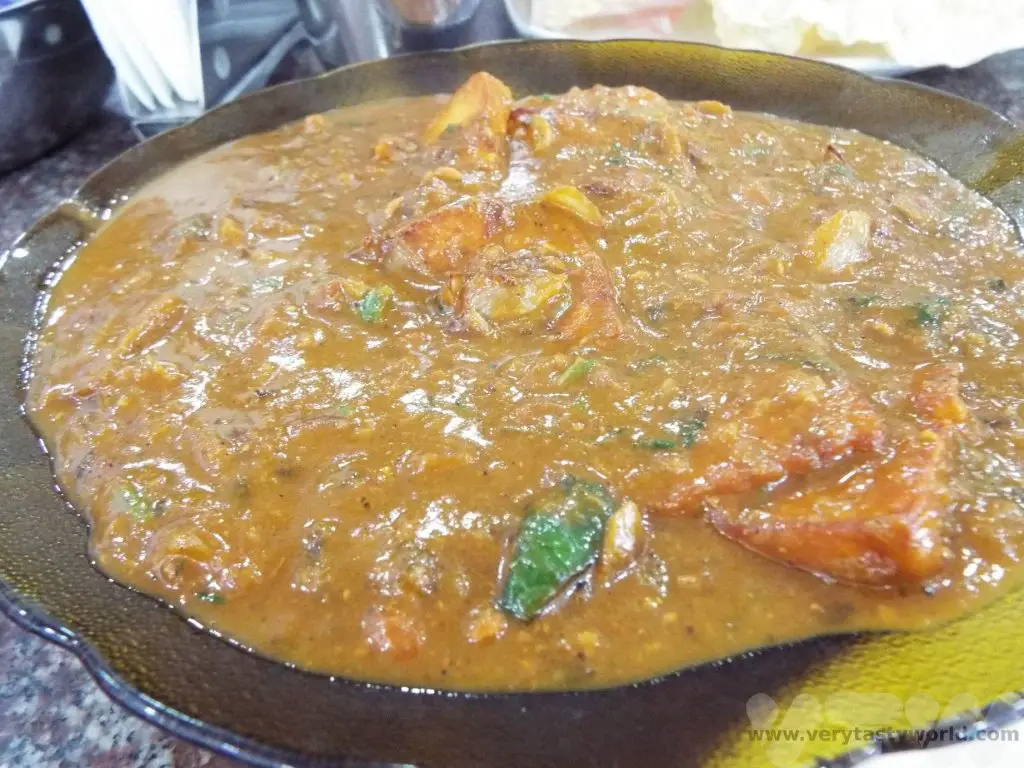
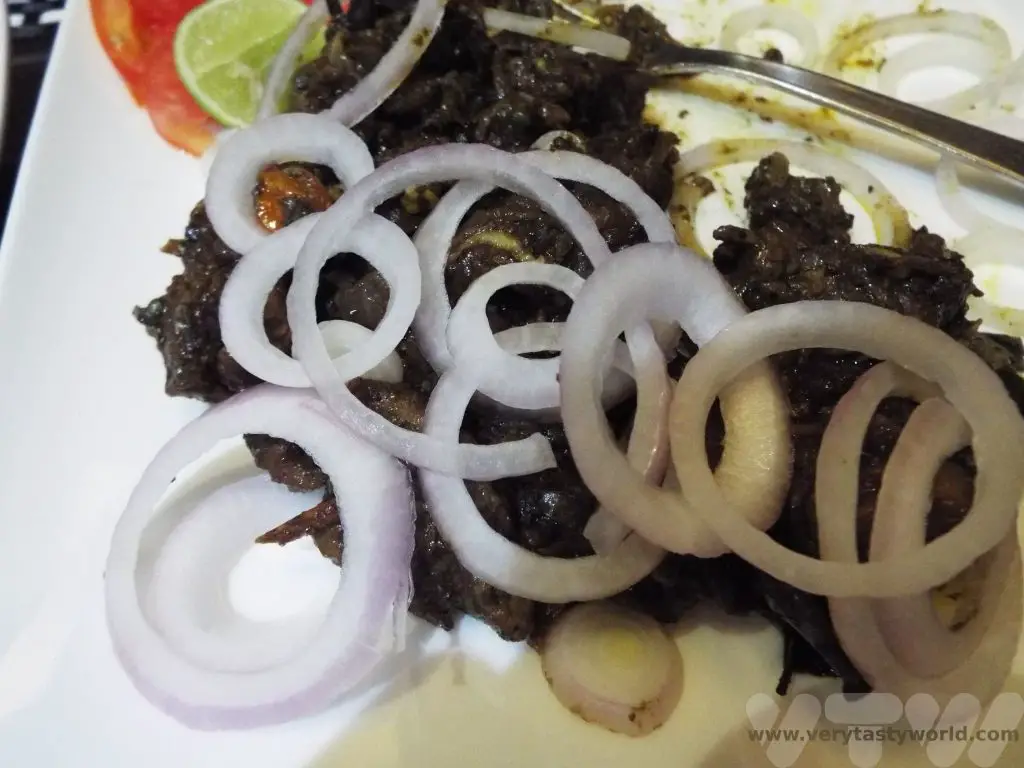
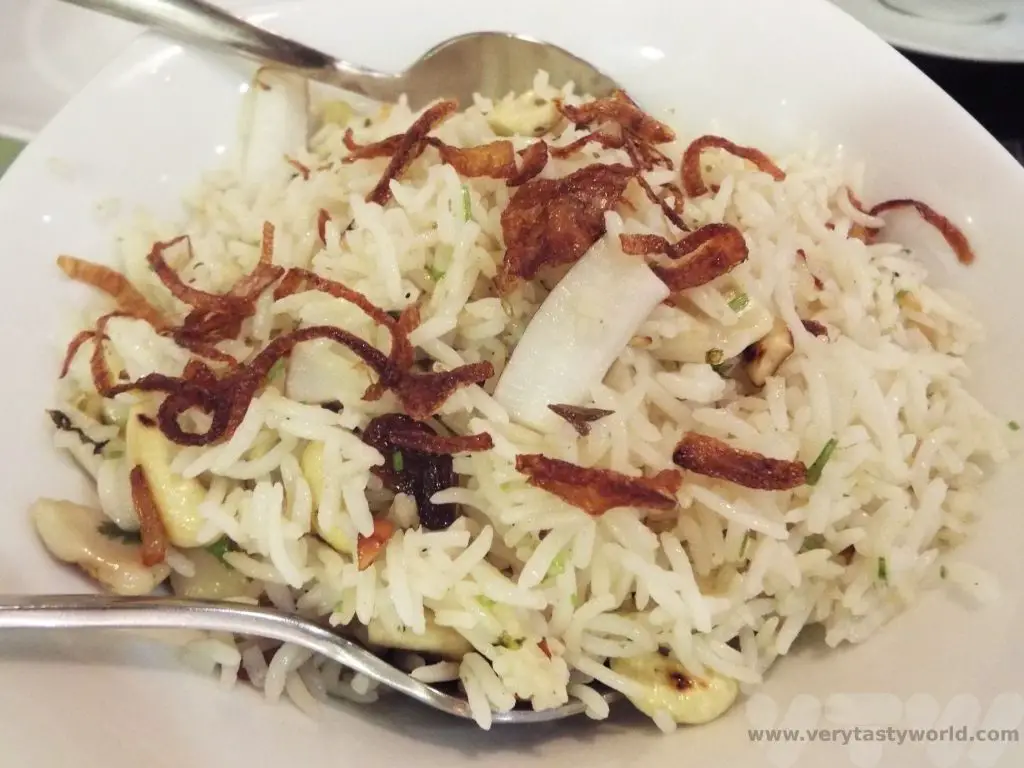
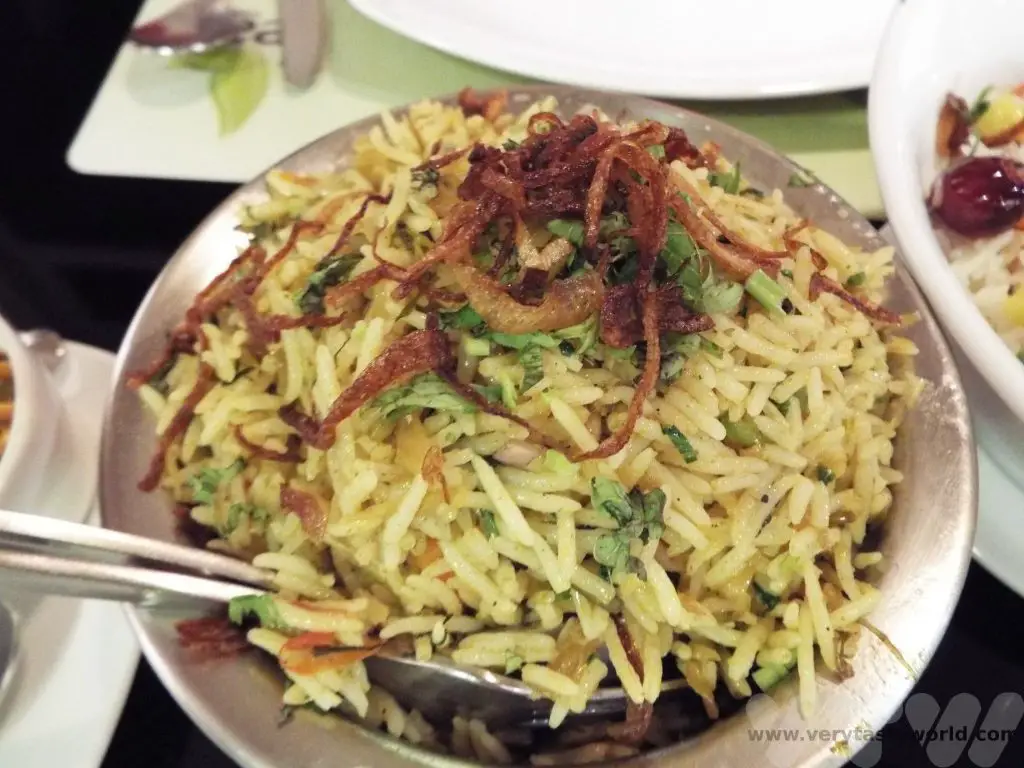
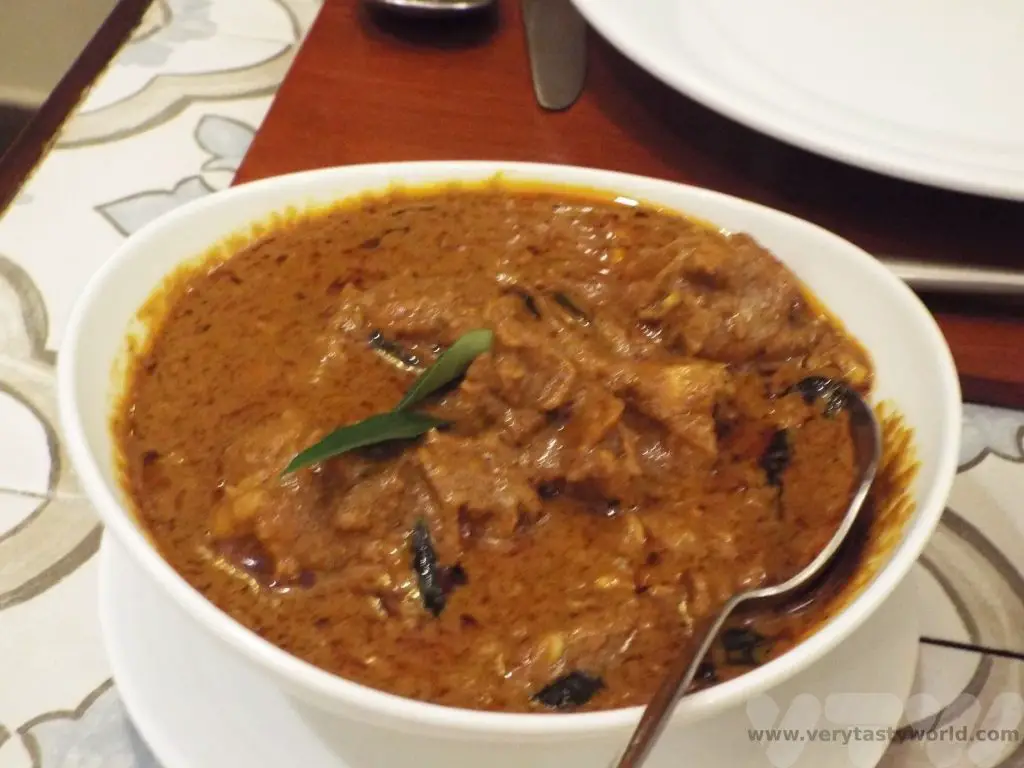
Munnar has so many things to offer the visitor – nature, wildlife, culture and, of course, the most delicious food.
Related Posts You May Enjoy

Kumarakom Houseboats on the Kerala Backwaters
Kerala, the state in South-west India, is one of the most popular tourist destinations in the country. Blessed with gorgeous landscapes, beaches and hill stations, it also has a rich cultural heritage and an amazing food scene, and it is easy to understand why the local people have named it ‘God’s Own Country’. One of the most pleasurable ways to explore the area is on Kumarakom Houseboats, known locally as a kettuvallam on Kerala’s backwaters. These enormous boats, some of which can be multi-storey, were originally used to transport rice and spices to the port of Cochin, the regional capital.
The backwaters of Kerala are a network of channels, rivers and lagoons that are located just inland from and running parallel to the Arabian Sea. Some of the lakes are connected naturally by rivers or by canals that have been constructed for that purpose. The water is brackish – freshwater meets the salty brine of the sea – and this gives the backwaters a very particular ecosystem.
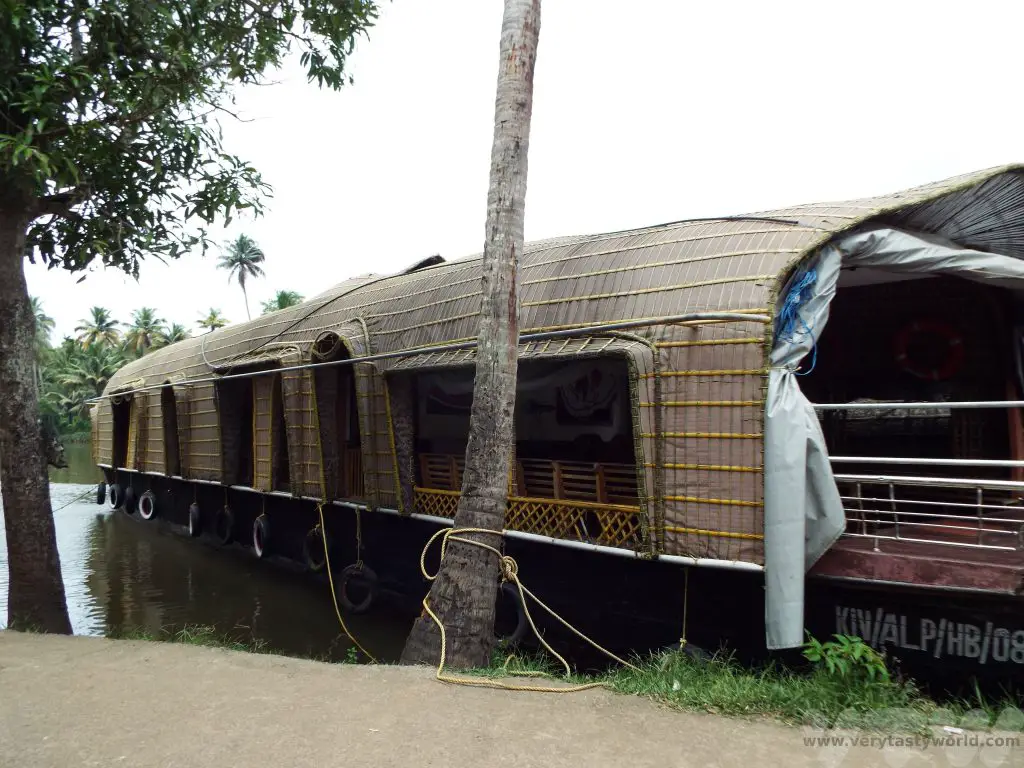
The boats have wooden hulls and a thatched roof. ‘Kettu’ means ‘tied’ and ‘vallam’ is a boat. These boats are constructed from long planks of wood tied with knots of coir and then coated in a resin derived from cashew nut kernels. No nails are used at any stage.
Hiring One Of The Kumarakom Houseboats
Although they were originally designed to be cargo ships they have been adapted for tourism and converted to proper houseboats complete with a living area, kitchen, bedrooms and bathrooms. The boats are available for hire for tourists to reside on, or they can be hired for a few hours at a time. It’s worth noting that boat hire isn’t cheap, especially compared with other prices in the region, but if you can afford it, it is definitely an experience worth undertaking.
Many houseboats are booked months in advance during the busy season and will follow a tour through the backwaters. If you aren’t visiting in the high season you might get lucky and find a boat that’s available to hire. We had been travelling down from Thekkady, arriving at Kumarakom at around 1pm. We managed to find a houseboat that was willing to take us on a four hour boat trip on the local lake and this price included lunch. The prices are for the hire of the boat and crew (normally a couple of people) so if you have a larger party the cost per person naturally reduces. You may find that if the boat is still available and hasn’t already found customers, it may be possible to negotiate a price.
A Tour Of The Houseboat
The thing that is most striking about the houseboats is how spacious they are.
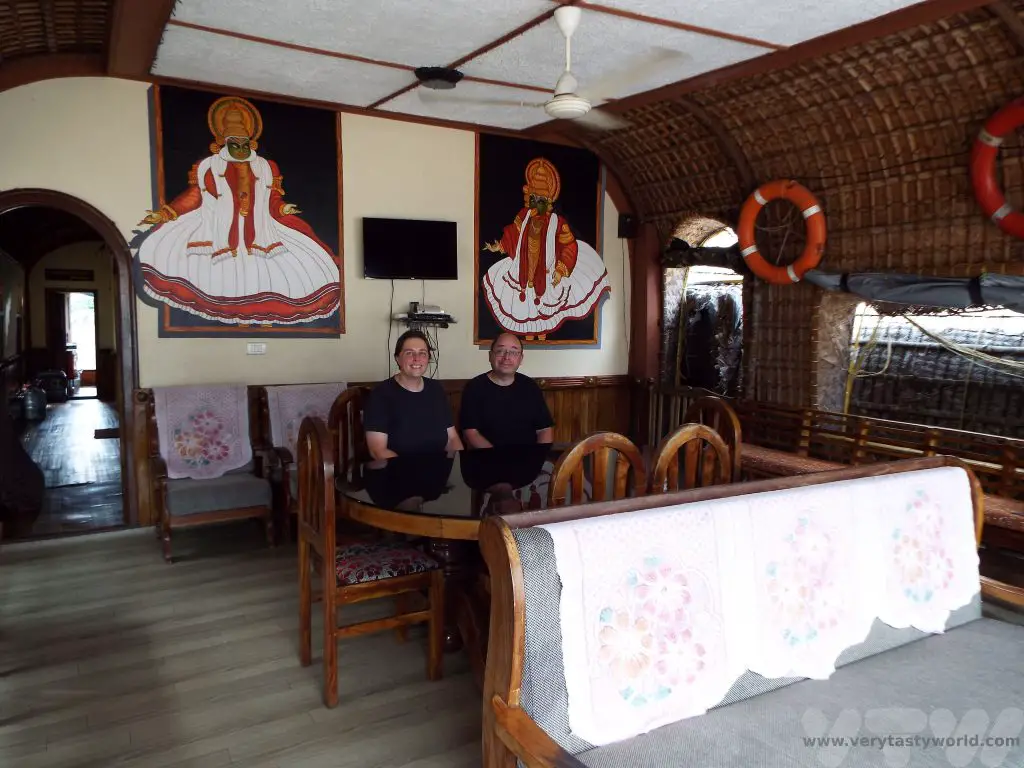
The living/dining area at the front has room for a dining table and plenty of seating space
The houseboat is steered from the front.
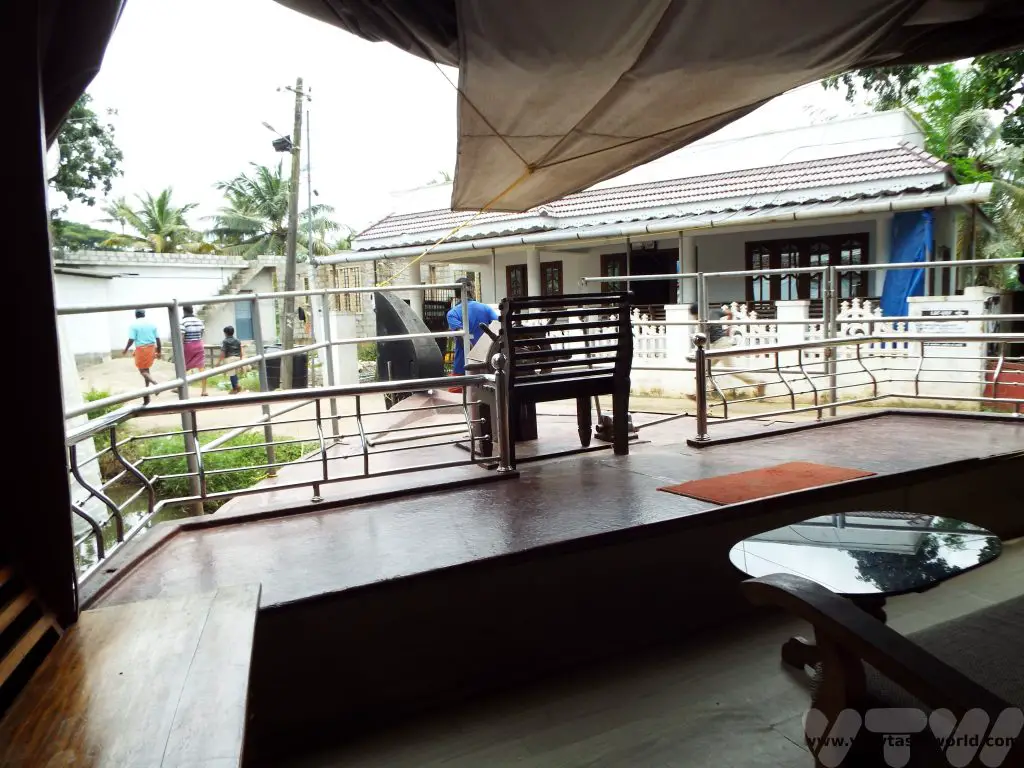
Then there is a long corridor from which there are large double bedrooms. Each bedroom has its own en-suite bathroom.
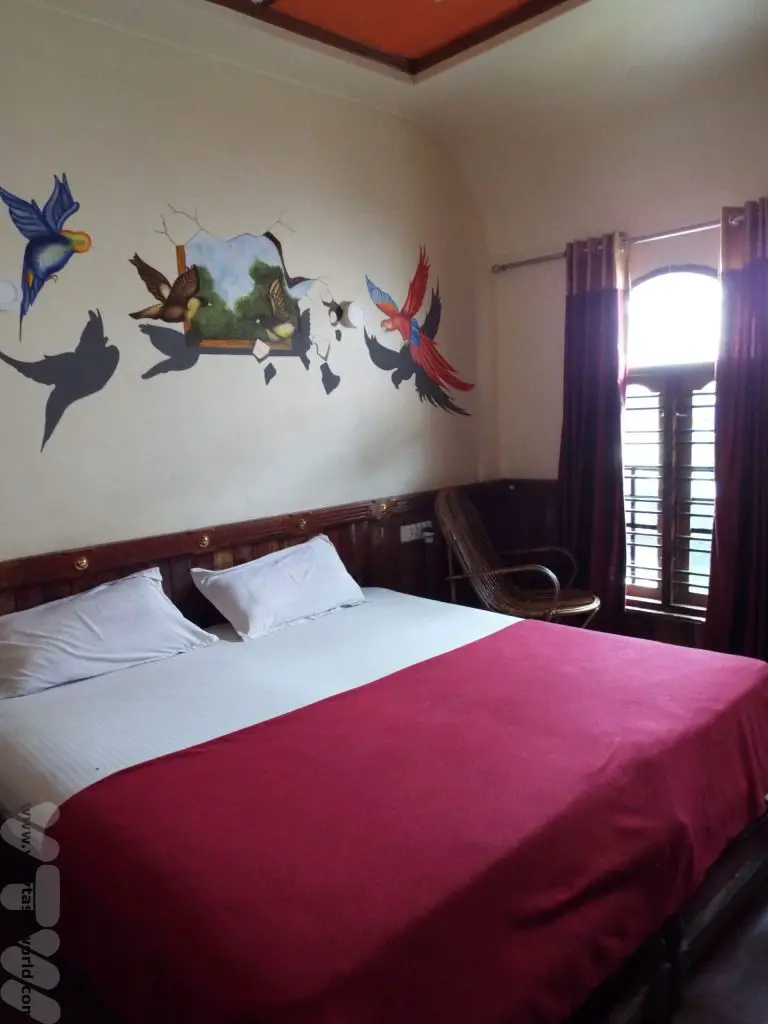
As with all areas in South India where food is served, there is a hand-washing area in the corridor.
Finally, the kitchen is located at the rear of the boat. Again, it is very spacious and has plenty of cooking facilities and storage space. Gas is provided by portable cannisters.
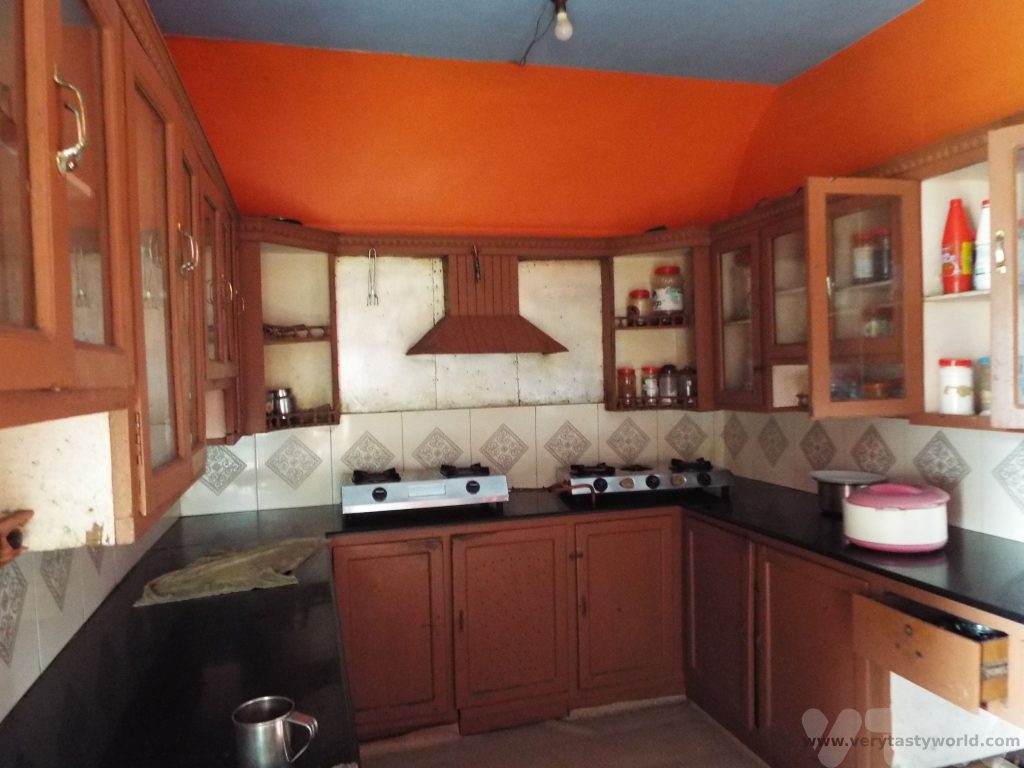
Lunch was already in the process of being prepared…
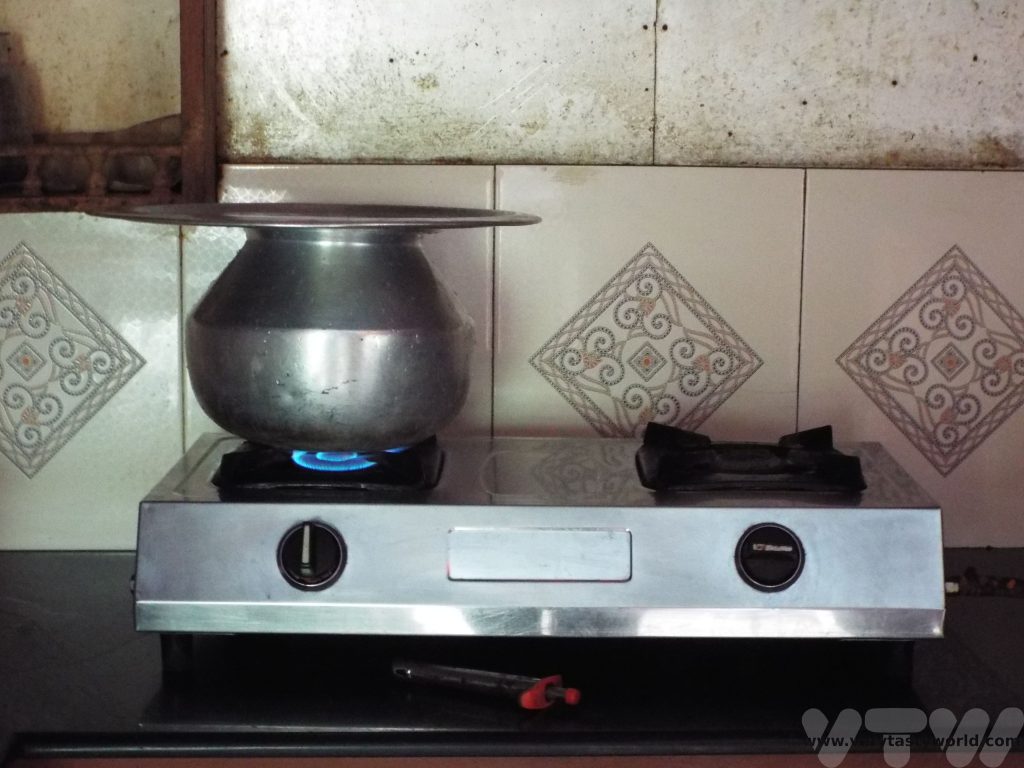
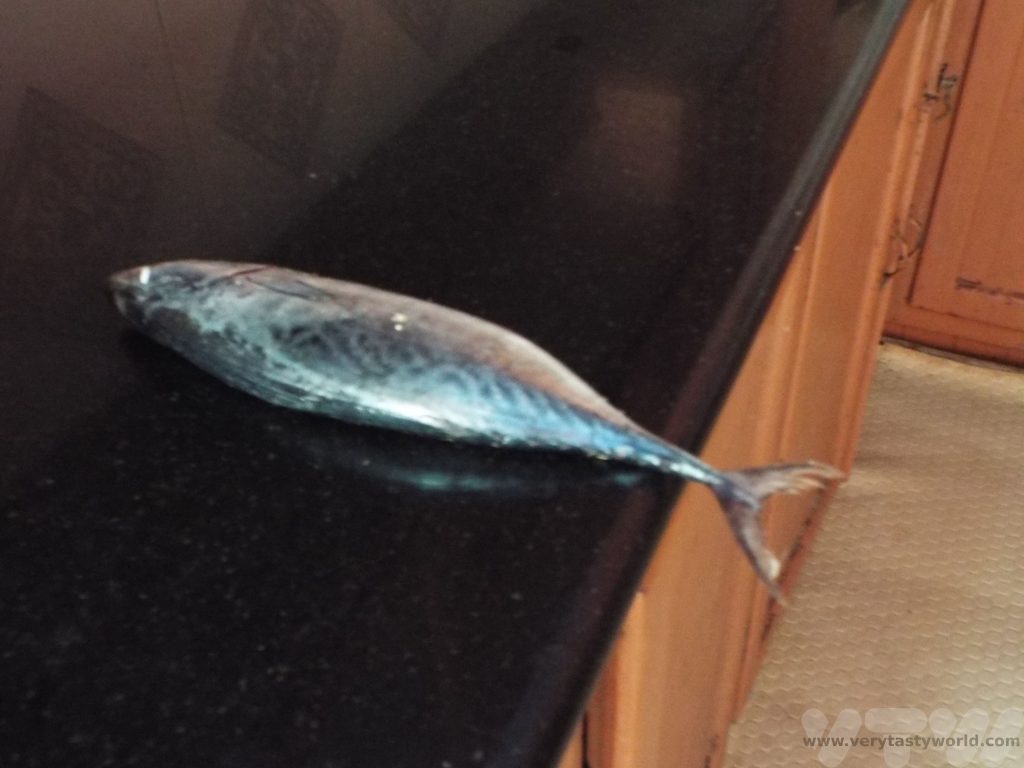
A Laidback Cruise on the Lake
The journey on the Kerala houseboat took us from the boat’s mooring along the river and onto the wide Vembanad lake. The boats are motor driven but move at a slow pace which makes for a leisurely experience. It very much reflects the way of life in Kerala.
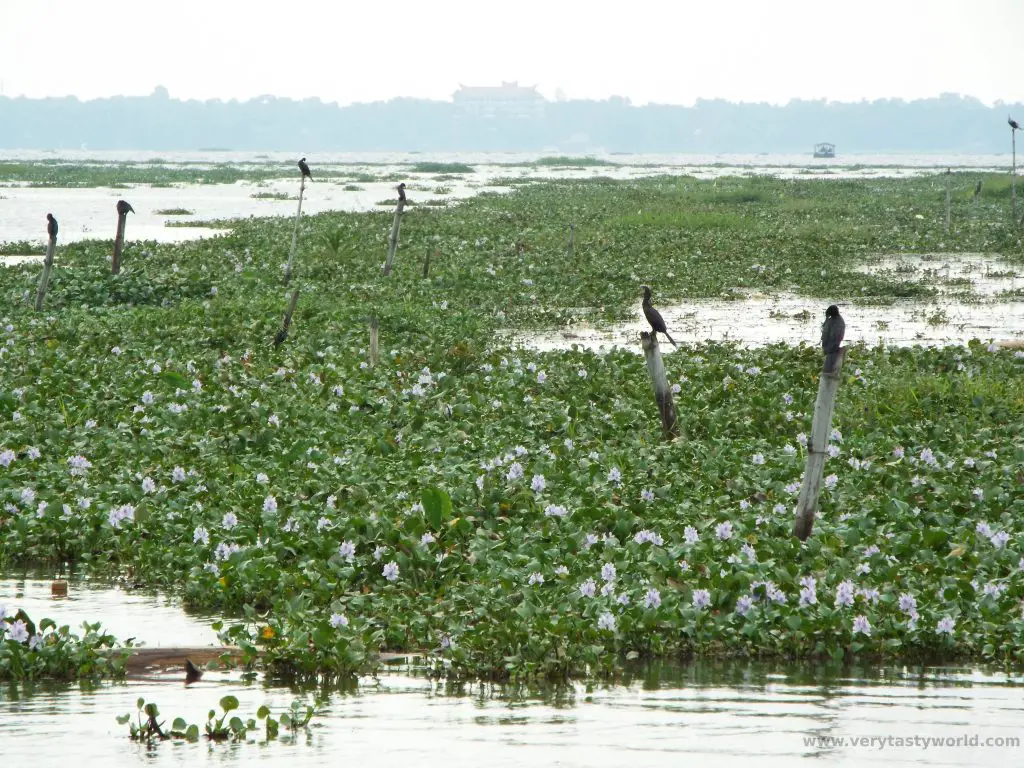
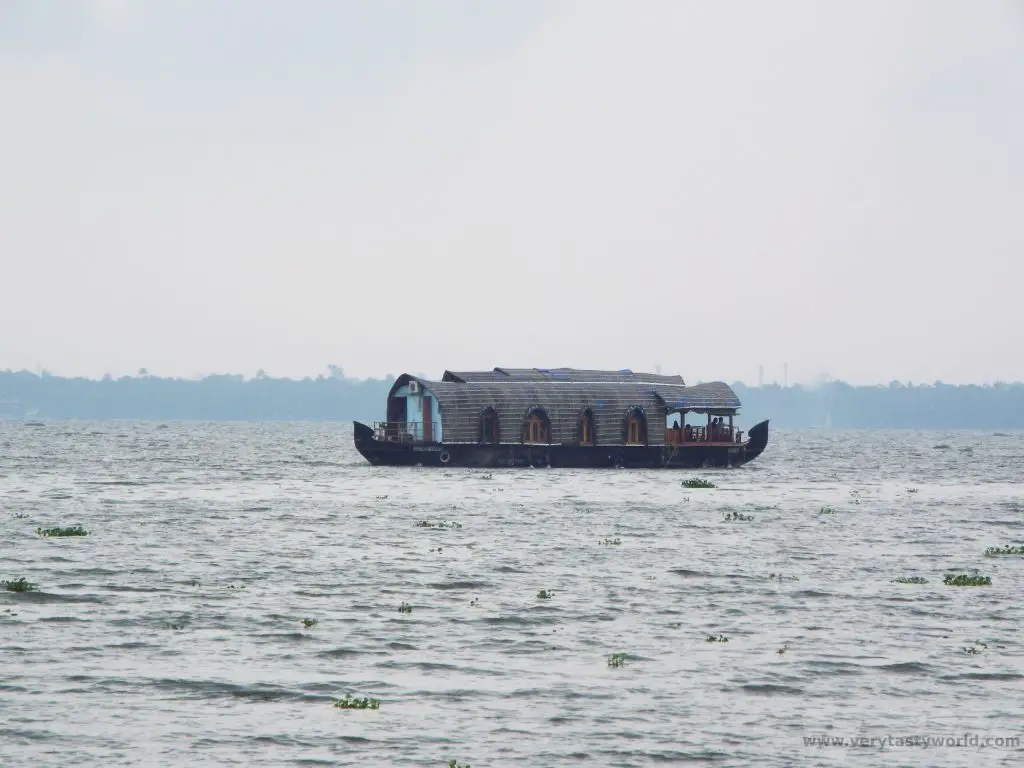
All along the shoreline it is possible to see fishing contraptions. They are formally known as shore operated lift nets, which doesn’t sound nearly as romantic as they look. These are used at night to catch prawns and other small fish. They are designed on a cantilever which ensures that the net descends into the sea when someone walks along the main beam. The catch is then raised by the use of ropes. Some have lights which are used to attract the fish.
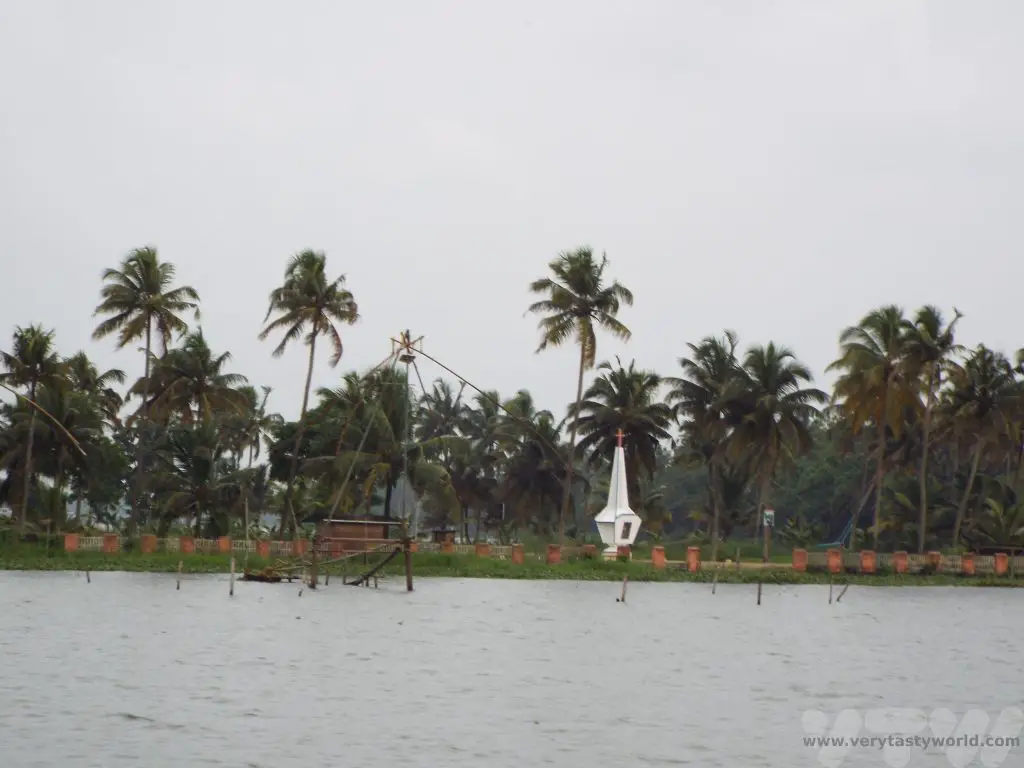
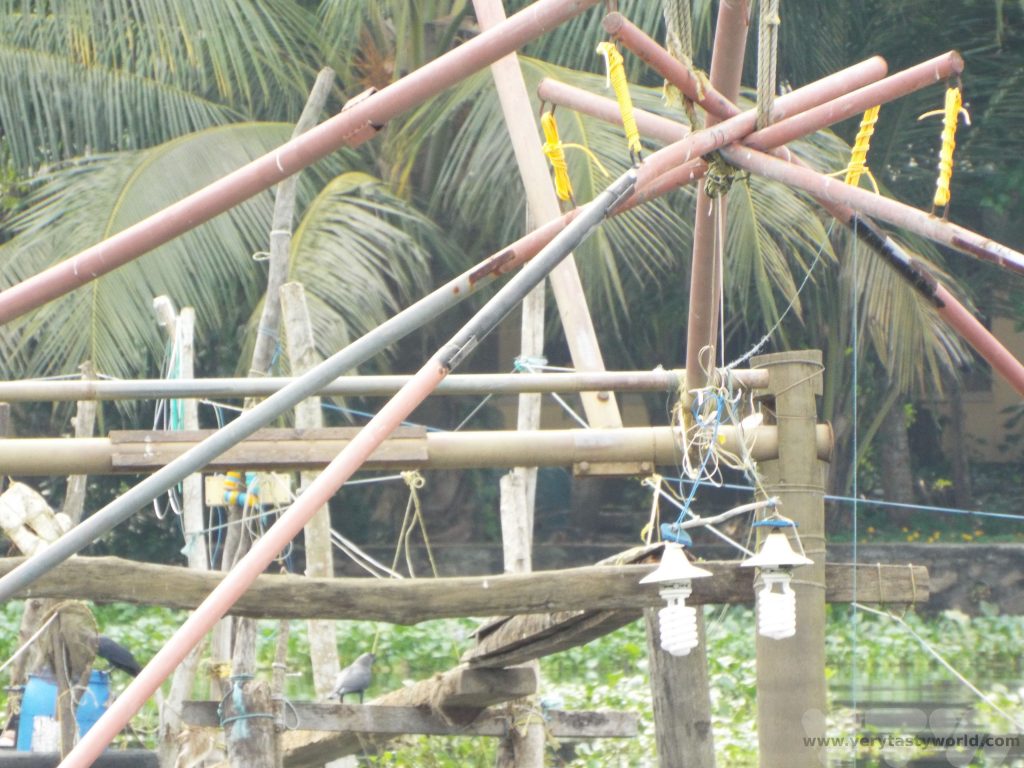
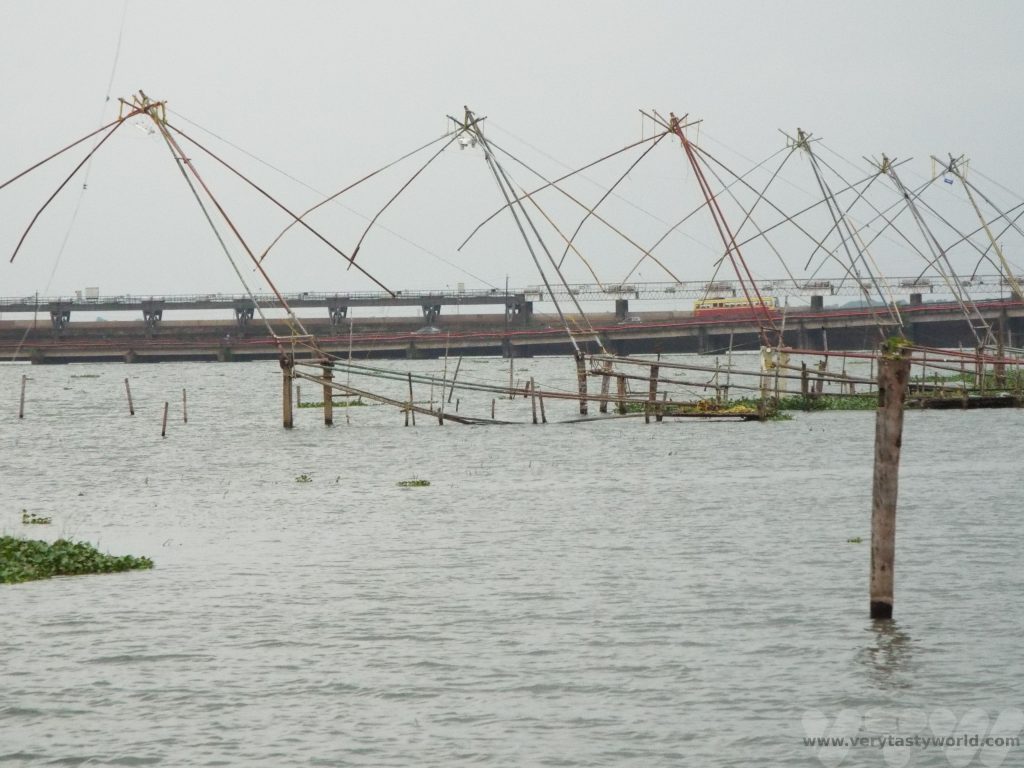
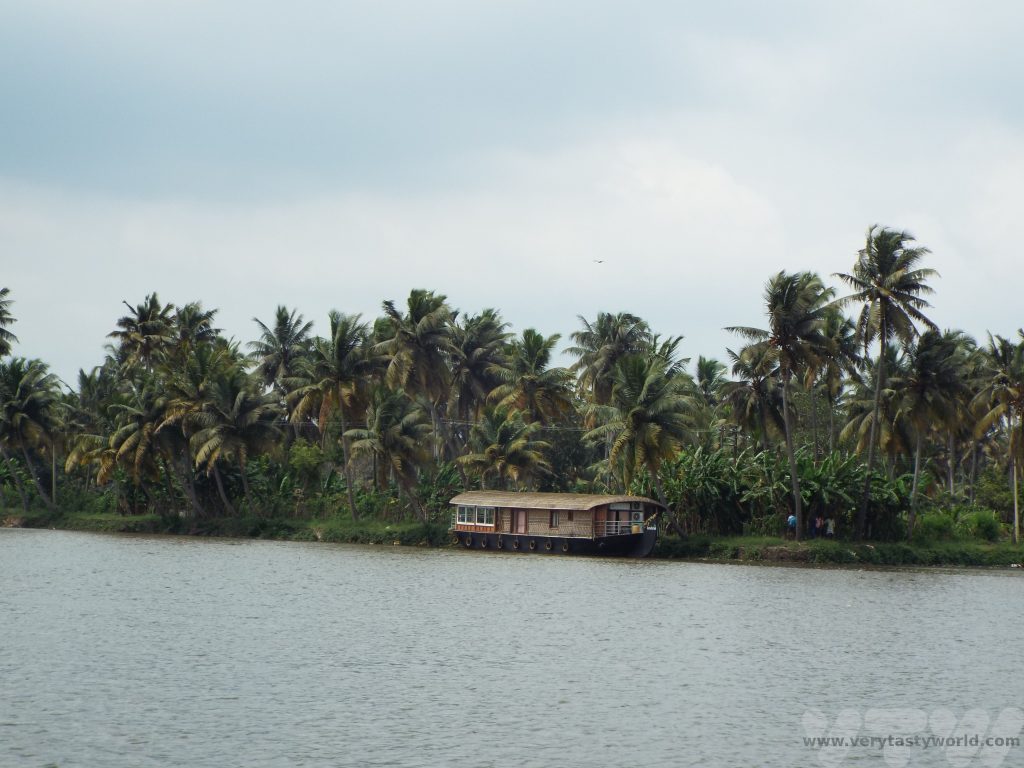
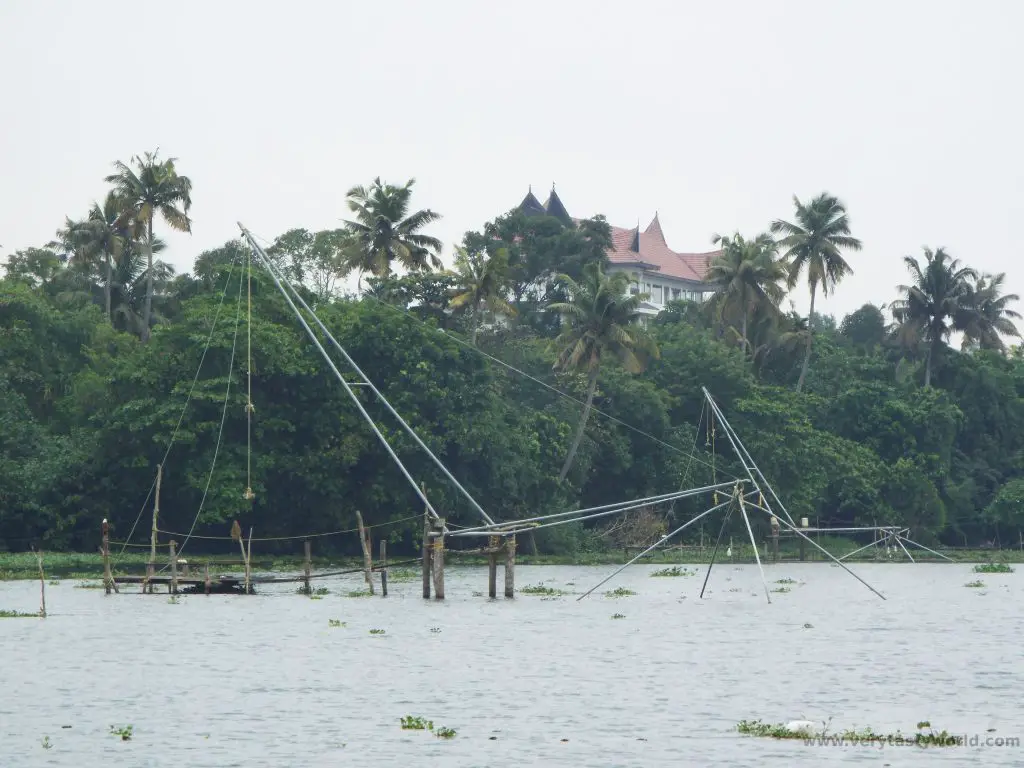
Dining on the Houseboat
Lunch on the Kumarakom houseboat comprised typical dishes from the region – a spicy fish curry with fish fry accompanied by vegetable side dishes and rice. We were asked how spicy we liked our food and we asked for it to be spiced as local people liked it. Like many dishes in Kerala we found that the spices were used for flavour rather than heat. And, of course, it was utterly delicious.
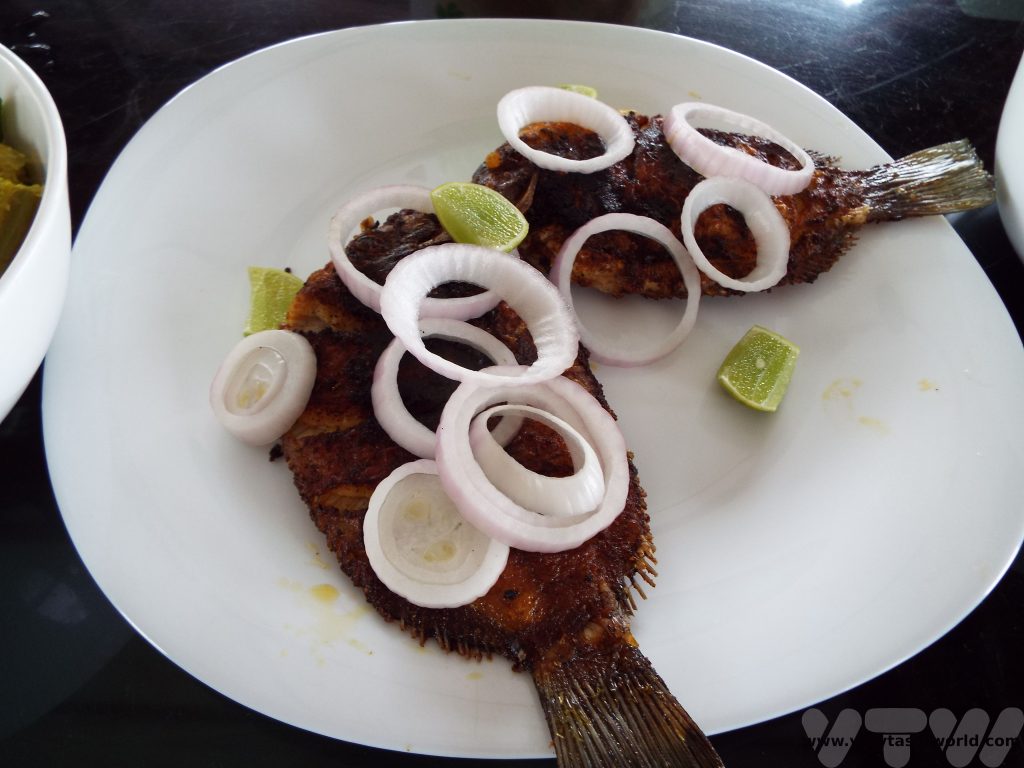
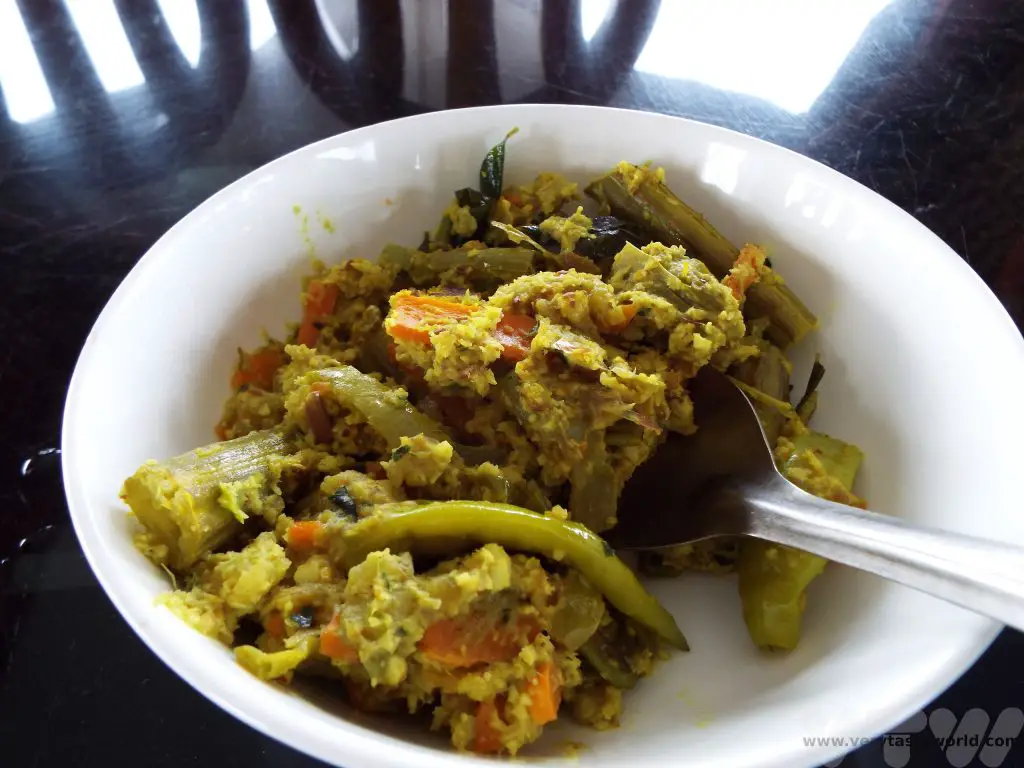
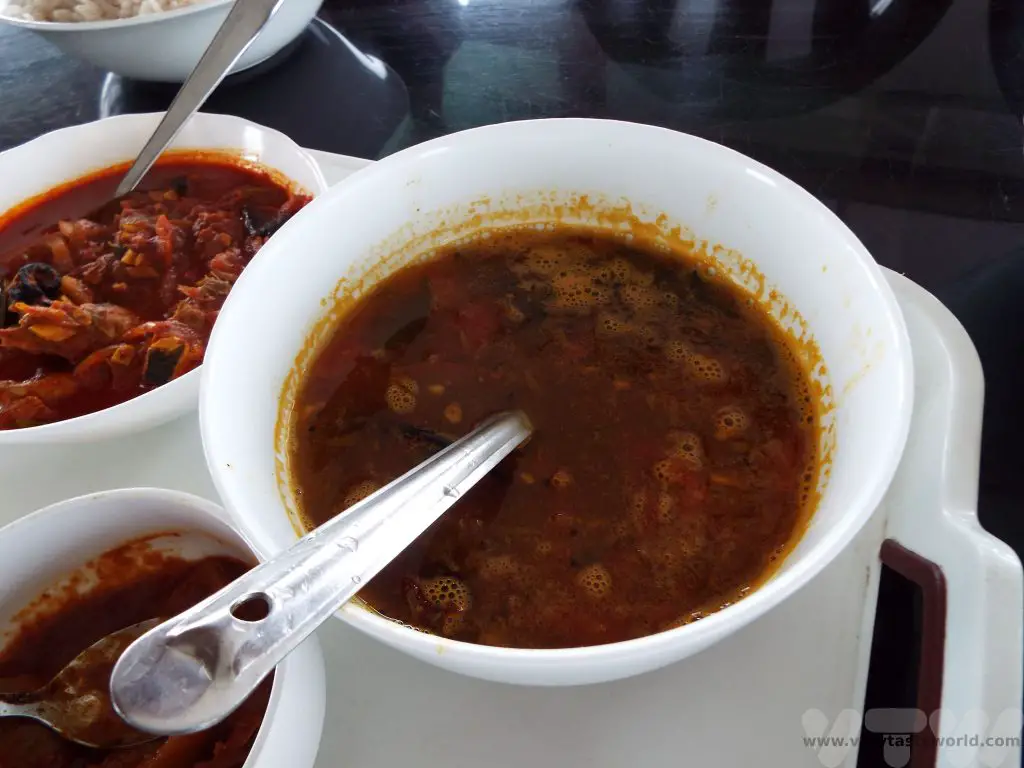
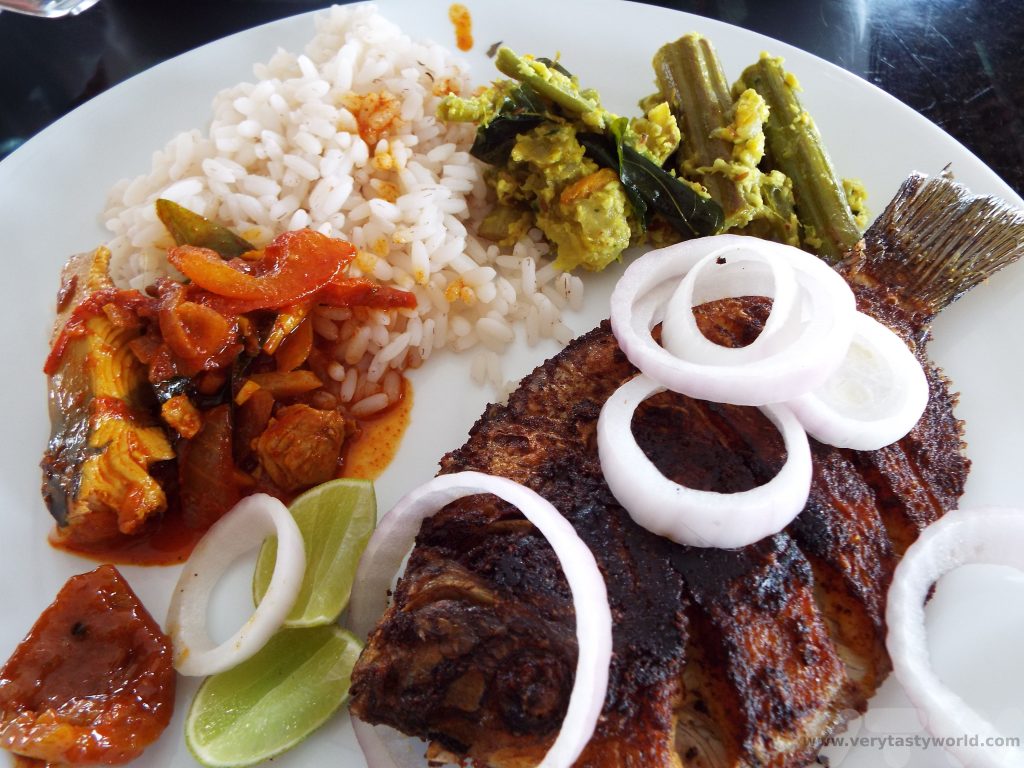
Munnar tea and a banana fritter were served for dessert.
We were visiting at the end of the Monsoon season so some rain was probably inevitable. But even a downpour couldn’t dampen spirits.
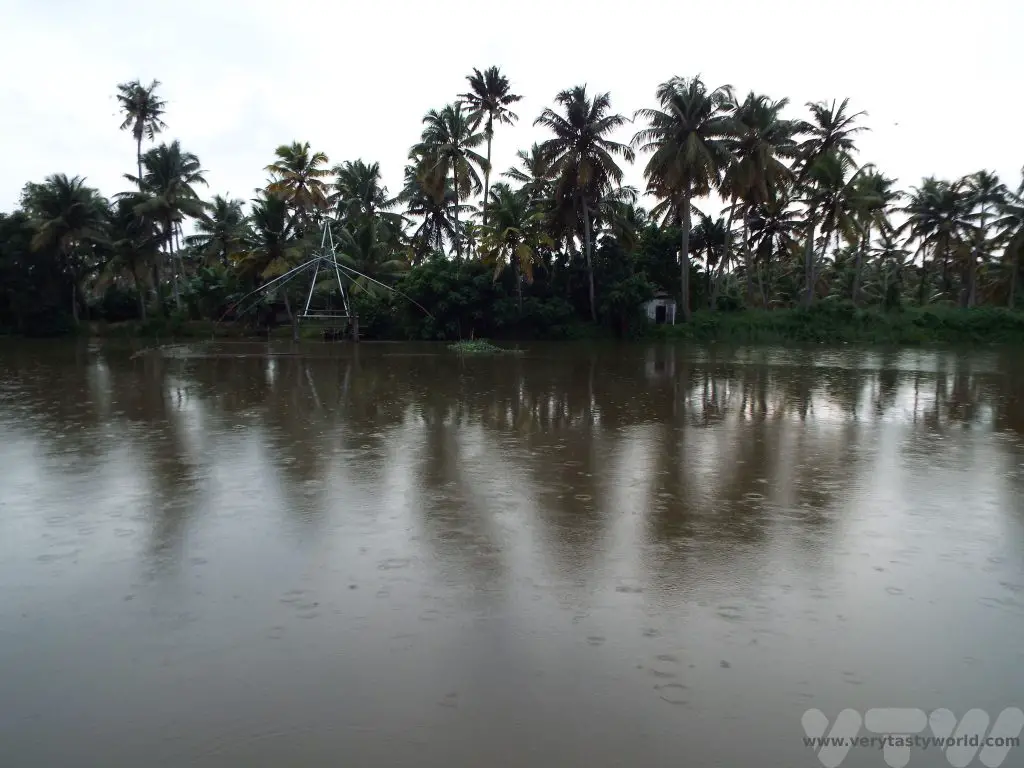
A lazy afternoon cruising the beautiful backwaters on a Kerala houseboat, with the addition of a delicious lunch, was a most refined way of spending an afternoon.
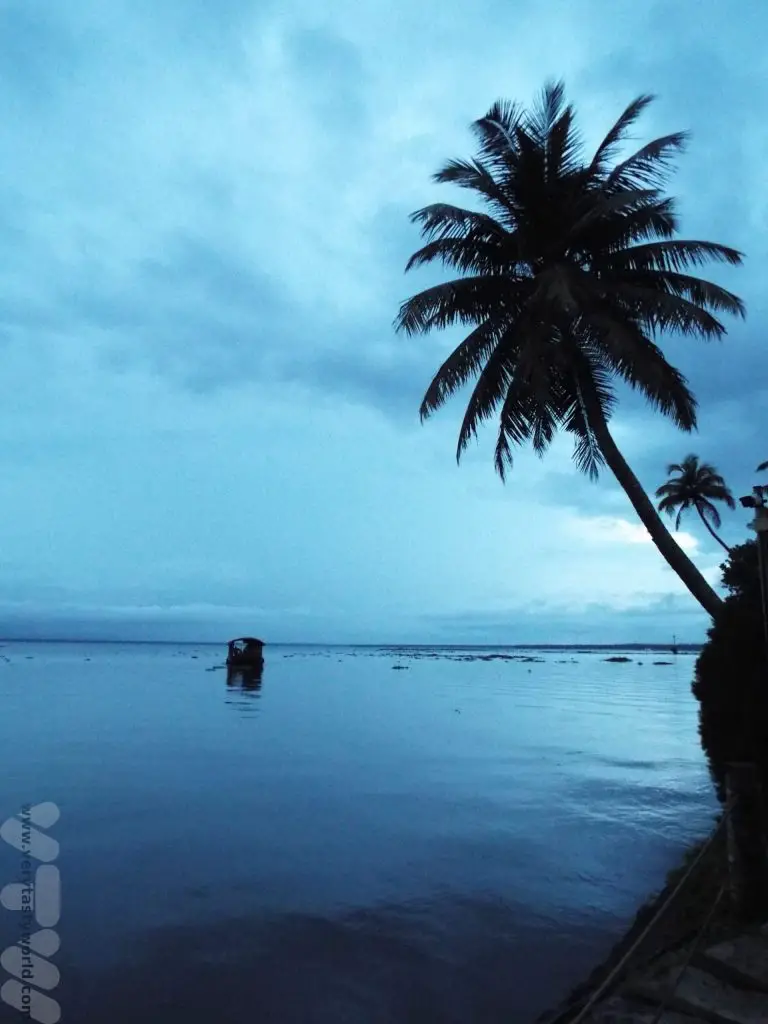
Related Posts You May Enjoy

